Find out more about your health here from our health professionals!

Consumption of supplementation is meant to fill the gap between poor nutrition intake and the actual nutrients required by the body. With our current lifestyle practice, it is necessary for certain individuals to consume supplementation such as those who find healthy eating is not palatable, those who always busy in which food is just meant to be eaten on the go thus, fast food, processed food and junk food is always the option and to those who unable to grasp the concept of healthy eating.
When it comes to choosing the right supplementation for your body, always bear in mind to ask your dietitian, nutritionist, or doctors on the Required Nutrient Intake (RNI) by the body, usually the amount needed is small only. If you unable to get that nutrient from food since you do not consume certain food, thus you might consider supplement taking.

As an example, if you do not eat vegetables you might consider consuming fiber, since people who do not consume vegetables usually will experience constipation. Apart from constipation, people who do not consume vegetables and/or fruits also lack of antioxidants, antioxidants is very important to fight free radicals which can cause cancer any many other chronic and metabolic diseases in the body, thus, consuming supplement product containing antioxidants might help.
There is also certain phase in life where you need supplementation such as women of childbearing age, especially if they are expecting for baby. They need to consume folic acid. Worldwide, study has been established that consuming about 0.4 mg of folic acid prior pregnancy may prevent spina bifida (a neural tube defect condition, where birth defect occur when the spine and spinal cord do not form properly).

Apart from folic acid, World Health Organization also suggest pregnant mother to consume iron supplementation. About 30 mg to 60 mg of elemental iron is recommended for pregnant women to prevent maternal anaemia, low birth weight and preterm birth. At this stage women who experience hyperemesis gravidarum (severe morning sickness) also is advised to drink oral nutrition supplement if they have difficulty in consuming food in general.
Oral nutrition supplement is not only suitable for women in such condition it is also suitable for elderly who have denture problem, in which consuming food and swallowing food is hard, elderly who is picky eater, elderly who is always lethargic.
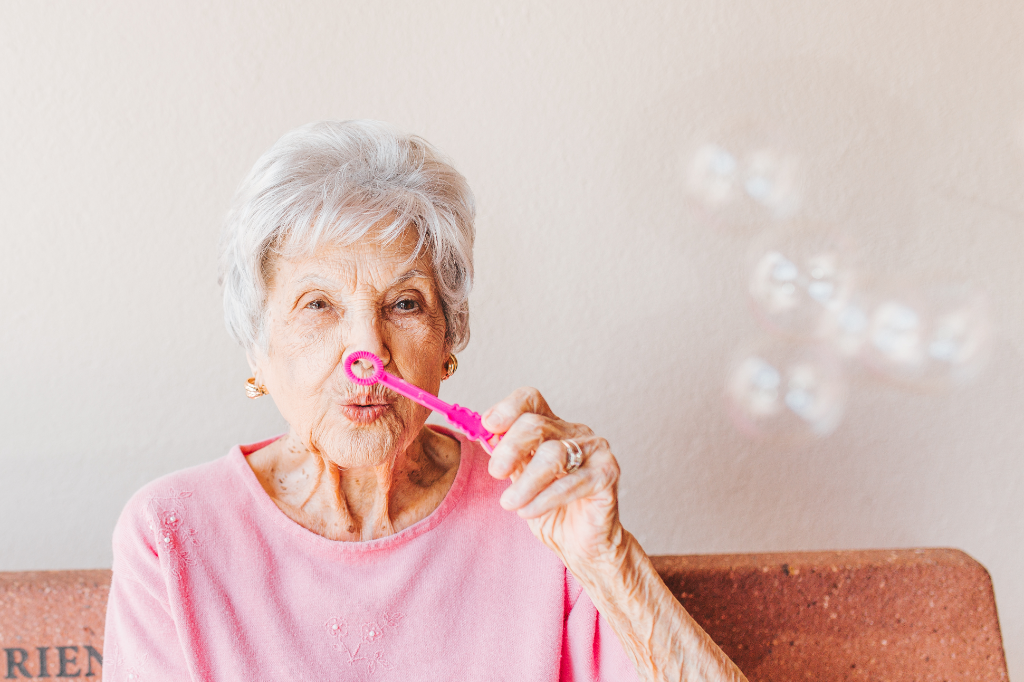
People who has certain food preference or regime, such as those who fasting from animal-based product (usually for religion purposes) or vegan can also consider including vitamin B in their diet. This is due to, vitamin B can be found ubiquitously in animal-based food, thus people who do not consume it might be deficient of it.
In conclusion,
When it comes to filling your nutrition gap, it is much essential to talk to your medical professional, letting them know your food preference, your current full blood examination results, and health symptoms that you are experiencing might also helps in improving your nutrition needs. It is very essential to buy supplement products from the legitimate source such as from pharmacy, or as per recommended by health professional. Apart from you need to make sure that the supplement product is safe to be consumed (e.g: have Ministry of Health (MOH) notification number), you have to also talk to medical professional since, some of the herbal or botanical based supplement might interfere with your medicine consumption.
References

Since years ago, vitamin C has gained its popularity to be used for various functions from prevention of illnesses, alleviating symptoms for illnesses, and even in the cosmetics industry for skin care purposes. It has becoming popular after the Nobel prized scientist Linus Pauling started to consumed it (1). Following that there are many studies conducted on vitamin C and many people started to question its effectiveness and there are also many people who started to consume vitamin C for various purposes.
With regards to COVID-19 pandemic, many people started wanting to boost their immune system thus making the demand for vitamin C supplementation and food products containing vitamin C is even higher. However, is it true that vitamin C can boost immune system and prevent or treat COVID19?
What is vitamin C and how does it improve immune system?(2)
Vitamin C or also known as ascorbic acid, is a water-soluble vitamin. It can also act as antioxidant, which helps in protecting cells against free radicals thus helps with various kind of diseases. Vitamin C improves our white blood cells (WBC) which function in fighting the viruses, bacteria, and generally foreign materials in the body. There are various studies with regards to this, one of it is the study that compare the administration of vitamin C and vitamin E as antioxidant, finding of the study noted that vitamin C give greater effect on body immunity as compared to vitamin E.
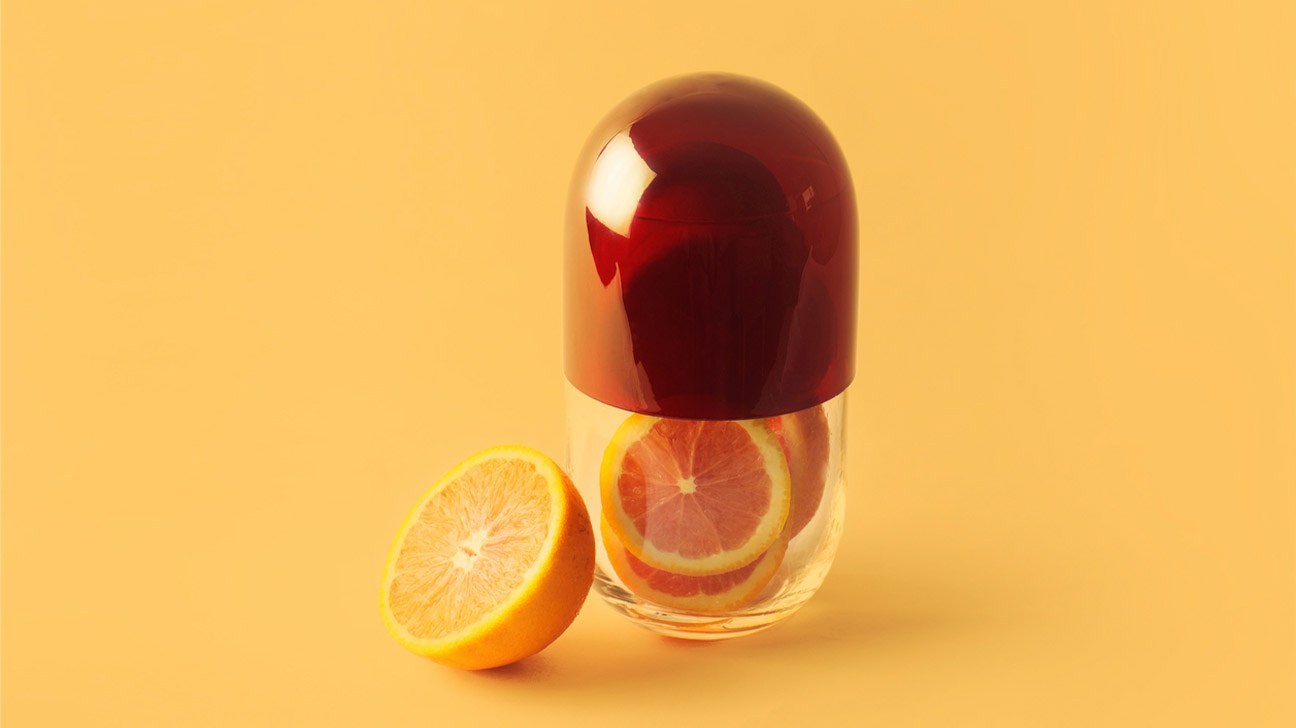
Vitamin C supplementation (4,5,6,7)
Vitamin C is found abundantly in fruits and vegetables especially citrus food. Also, if you look closely on the food labelled, there are food that is fortified with vitamin C such as breakfast cereal, milk etc. Local fruit that is high with vitamin C is guava, the amount of vitamin C in guava is even higher than in the orange.
As for cold, vitamin C has been a long popular remedy for common cold, which is why many people started to consume it when the pandemic strikes. Research shows that vitamin C does not reduce risk of getting common cold. Well, being sick once in a while, or get common cold once in a while is a good thing actually, it helps antibodies to fight against pathogen (bad bacteria and viruses) and improve the immune system naturally. However, the consumption of vitamin C can lead to a shorter period of common cold with milder symptoms. But the consumption of vitamin C after the symptoms of common cold is showing does not appear to be helpful.
With the COVID-19 pandemic, it’s especially important to understand that no supplement, diet, or other lifestyle modification other than physical distancing, also known as social distancing, and proper hygiene practices can protect you from COVID-19. However, since the symptoms is the same as common cold thus it is thought that it can be used to alleviate the same symptoms present. Currently researchers and physicians are studying the effect of vitamin C via (high dose intravenous) (IV) and also on the effect of supplementation taking on the new COVID19.
In conclusion, it is safe to say that, there is no harm in consuming vitamin C with the purpose to boost immune system in this pandemic situation, but also it has to be hand in hand with the other safety precautions such as only go out when it is necessary, must always adhere to the one meter social distance measure, must always wear mask when you are outside, must wash hands frequently using soap or hand sanitizer.

References
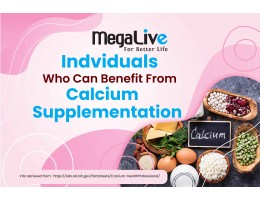
Calcium is among very common micronutrient heard by public and milk advertisement is the contributor to this. Through this many people know that calcium is very important for bone and teeth. Calcium can be found in various food products nowadays not only milk. It has becoming partly marketing strategy for food company to incorporate calcium in their food product especially if the target consumer is children or elderly since many people know that calcium is vital for these two groups, children, and elderly.
Function of Calcium?
Body needs calcium for strong bones and teeth. Calcium is also required to carry out important function such as for muscle to move, for nerves system to carry messages between brain and body parts, for blood vessels to move blood throughout the body, and for body to help release hormones and enzyme that affect almost every function in the human body (1,2,3).
How much calcium is needed?
Normal adult need about 1000 mg of calcium daily, however there are certain condition which require to consume up to 1300 mg of calcium daily such as for pregnant lady, lactating mother, post-menopausal women, and man who is above 70 years old of age (1,2,4).
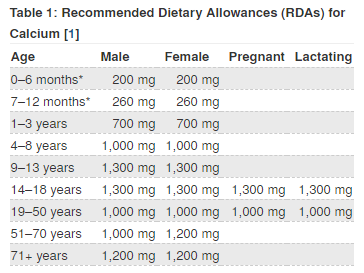
Calcium and diet
Body does not produce calcium, so it needs to be consumed from foods. Luckily, calcium can be found in variety of foods such as dairy products, dark leafy vegetables, fish, and many other fortified food products (1,2,3). As for our local food products sardine, anchovies, cencaluk, budu, tofu, tempeh, broccoli, kalian, and tapioca leaves are among food that is high with calcium (4).
It is also important to take note that in order to absorb calcium, body needs vitamin D. Only a few foods containing small amount of natural vitamin D, such as egg yolks and salmon with bones. Mostly, we rely on the exposure to sunlight in order to get enough vitamin D, of course in Malaysia the country with sun all year long have no problem with this! However, as currently we are still in the so to say the ‘lockdown’ phase thus it is very important to remind everyone to get the sunlight every day at least 20 minutes for its vitamin D and calcium absorption (1,2,4).
Though all the foods stated above are easily found, but there are conditions which hinder individuals from getting enough calcium from diet thus require it from calcium supplementation.
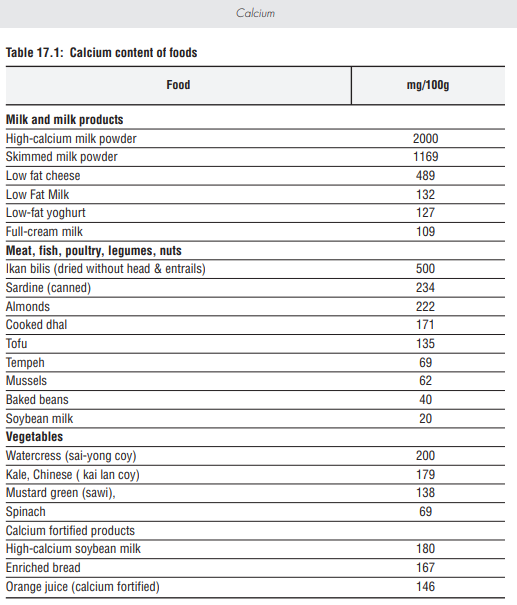
Conditions for calcium supplementation
Before considering calcium supplement, individuals must understand how much calcium needs by the body (stated above). Then individuals must seek help from nutritionist, dietitian, pharmacist, or doctors, where they will assess your calcium consumption from your diet through diet recall. If the calcium intake falls short thus you need to top up calcium from supplement.
Hypertensive individuals and diet with large amounts of sodium.
Several literature reviews on topic of total calcium intake from food and supplements with regards to hypertension suggested that there is possible link to lowering high blood pressure. However, since most of the study design have small number of subjects, and were tested with people from different background, and not to mention possess various kind of biases thus making it difficult for scientist to draw conclusion (1,2).
However, a large study subject (Women’s Health Study), found out that calcium intake was inversely associated with risk of hypertension in middle-aged and older women, in terms of preventing hypertension (1,2).
The consumption of high sodium food lead to more calcium excretion through the urine, which will lead to constriction of blood vessels, which in the end resulting in high blood pressure. Drinking large water after consuming salty food, is not enough, as it may be making blood pressure return to its slightly normal condition, but it is not helping with the loss of calcium (1,2,5).
Pregnant and lactating mother
Often times, pregnant women is being reminded of how important is folic acid for the baby, even from the trying to conceive period, healthcare providers already advise them to consume folic acid, in order to prevent spina bifida to the baby. However, calcium is as well very important for mothers throughout pregnancy and lactating period especially for mother who is lack of calcium from diet (1).
Several professional organizations recommend calcium supplements during pregnancy for women with low calcium intakes to reduce the risk of preeclampsia (a condition where gestational hypertension always occur). For example, the American College of Obstetrics and Gynaecology (ACOG) states that daily supplementation with 1,500–2,000 mg calcium may reduce the severity of preeclampsia in pregnant women who have calcium intakes less than 600 mg/day. Similarly, the World Health Organization (WHO) recommends 1,500–2,000 mg calcium for pregnant women with low dietary calcium intakes, particularly those at higher risk of gestational hypertension (1).
As for normal healthy mother, the consumption of calcium is especially important during lactating period, mother may notice symptoms such as cramps which indicates lack of calcium during pregnancy and lactation period. Also if a mother is on iron supplementation as well, it is advisable to not consume both at the same time, it is best to gap several prior the consumption of these two since it can interfere with the absorption (1,2).

Post-menopausal women and elderly
Throughout the lifespan, bones are constantly being broken down and built up in a process known as remodelling. Bone cells called osteoblasts build bone, while other bone cells called osteoclasts break down bone if calcium is needed. In healthy individuals who get enough calcium and physical activity, bone production exceeds bone destruction up to about age 30. After that, destruction typically exceeds production. This is sometimes called “negative calcium balance,” which can lead to bone loss. Women tend to experience greater bone loss than men later in life due to menopause, a condition that lowers the amount of hormones that help to build and preserve bone (5).
Getting enough dietary calcium at all ages may help to slow the degree of bone loss, but calcium intakes at any level are not known to completely prevent bone loss. Calcium is less easily absorbed at later ages, and therefore eating a very high amount of calcium will not always resolve the problem (5).
Studies on calcium intake and bone density in postmenopausal women have mixed results that could be due to various reasons. Because the results of some large trials found that higher calcium intakes (usually achieved with a supplement) was associated with improved bone density and slightly lower risk of hip fractures, the RDA for calcium for postmenopausal women is higher than at younger ages. Some studies suggest that frail elderly (80 years and older living in institutions) may benefit from supplementation more than “younger” elderly who live independently in the community (5).

Individuals with lactose intolerance and limit dairy products
Individuals with lactose intolerance usually, is unable to consume food that has high amount of calcium especially if it come from milk and dairy source of food. Thus, lactose intolerance individuals need to consume it form dark leafy vegetables and soy-based product. However, in most cases the consumption is not enough or individuals with lactose intolerance consume not enough vegetable rich with calcium or other food source rich with calcium, thus for this specific population calcium supplementation is needed either from fortified food product such as ready to eat cereals or from calcium supplementation tablet itself.
Individuals receiving treatment on certain medication in the long period
Well, there are certain medication which can influence the absorption of calcium. Medication such as to treat osteoporosis (bisphosphonates), antibiotics (fluroquinolone), medication to treat low thyroid problem (levothyroxine), anticonvulsant (phenytoin), diuretic medication (Lasix and bumex), antacids containing aluminium and magnesium and also glucocorticoids (prednisone). These are all either causing calcium loss in the urine or cause calcium depletion in the bone. Thus, if you are on these medication, it is advisable to take calcium rich foods four hours prior or after the intake of medication, so that it would not interfere with the absorption of calcium, it is also best if you consume calcium supplementation if you do have poor intake of calcium rich food as well (2).
Conclusion
In these situations, calcium supplements may help you meet your calcium requirements. Talk with your doctor or dietitian about whether calcium supplements are right for you.
References
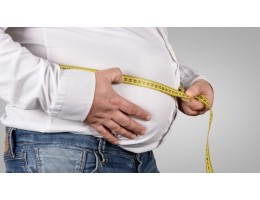
There are millions of slimming pills product on the market with various marketing strategy, not only in pills, but there are also, drinks or beverages, functional, ointment, lotion, and many other products which claimed that it can be used for weight loss. But is it really works?
In this article we are going to focus solely on slimming products that people consume like functional foods, pills, beverages, not for external use like ointment, lotion, or other types of slimming products since different kind of product has different method on how they give effect to the body.
Slimming pills on the market is either from drug, or drug combination or from herbal supplement. As for drugs at the moment, in Malaysia we only use two types of drugs which is anti-obesity medicine (AOM) that act on gastrointestinal tracts (GIT) or better known as orlistat (brand name Xenical) and drugs which is used to suppress appetite or better known as Sibutramine or phentermine. The consumption of all these drugs must be prescribed and monitored by doctors.
There are certain criteria for doctors to consider in order to prescribed slimming pills such as when individual has BMI more than 30, but most importantly is when the individual have tried to loss weight like eat healthily and exercise. Once individual have achieved certain weight loss then the doctor can no longer prescribed the medication, which is why, the consumption of such drugs needs to be monitored by doctors only. Also, to note that there have been cases previously where the prescription of slimming drugs which harm individual health, the drug is called Fen-Phen, it was phenomenal back then, it was a combination from Phentermine and Fenfluramine, but Foods and Drugs Administration (FDA) already take it back from the market as it can harm human health specifically heart valve. When prescribing slimming drugs doctors will usually conduct full body examination and blood test from time to time thus whatever things that is not suitable for body may be detected early, unlike consuming slimming pills without prescription.
As for herbal supplement slimming pills, the ingredients can be from various ingredients, either plant-based ingredients or animal-based ingredient. Since it does not consider as drugs thus it is not put under the strict and effectiveness requirement that drugs are in.
In Malaysia, all these supplement products need to be notified to Ministry of Health (MOH) under the National Pharmaceutical Regulatory Agency (NPRA) for its safety. Once it is being notified, NPRA will provide the supplement products with notification number. Many product founders use this as their marketing strategy as to promote that their product is approved by MOH. However, products with notification number does not means that they are safe. It means that they are confident that their product is safe so that MOH can come and spot check anytime to make sure that their products is safe. Of course, before NPRA provide the product with the notification number they already go through the product ingredients and all that, but different batches of supplement are produce over the time, which can be different from the one sent for checking initially.
Among common ingredients that are in slimming pills supplement are chitosan (from shrimp shell), caffeine, bitter orange, green tea, beta gluten, carnitine, raspberry ketone, white kidney bean, yohimbe, guar gum, garcinia cambogia, fucoxanthin and many more. All these ingredients usually do not have conclusive study findings but rather mixing or promising study findings.

Which is why when it comes to supplement consumption it is very much suggested to go through below guideline from MOH:
Check the products that you are going to buy whether it is registered with the regulatory authority.
Some of the products (including herbal) may also cause adverse effects. Make sure your medical condition is not affected by it if you would like to try these products. Seek advice from healthcare practitioner before consuming it.
Read label carefully and do not take more than the listed dose.
These products are licensed as either over the counter (OTC), traditional, or functional food, therefore it is not ethical for the founder to make claim such as ‘stops from being fat’ or ‘speeds up metabolism’.
Avoid slimming products which promote rapid weight loss, promise quick result, suggest that you do not need to exercise or diet, fail to recommend dietary advice or worse encourage that you can still consume anything you want
In conclusion, whether slimming pills work or not it is still depending on type of slimming pills itself whether it is considered as drugs (need doctor prescription) or herbal one which is over the counter pills. All in all, health experts agree that making lifestyle changes including following a healthy eating pattern, reducing calorie intake, and engage in physical activity is the basis for achieving long term weight loss. But since making lifestyle changes can be difficult to some people, even more nowadays that there are many temptations for unhealthy food around us, not to mention the processed food which is marketed as ready to eat or ready to cook food (microwaved) but contain high trans-fat. Thus, it is really suggested that if you are to consume any slimming pills, get advice from healthcare professionals and accompanied it with healthy eating habit and exercise.
References
Ministry of Health (MOH). MyHealth Portal. Slimming Pills. http://www.myhealth.gov.my/en/slimming-pills-2/
National Institute of Health (NIH). Dietary Supplements for Weight Loss. Fact Sheet for Health Professionals. https://ods.od.nih.gov/factsheets/WeightLoss-HealthProfessional/
Lasting damage from Fen Phen. https://www.webmd.com/heart-disease/news/20081105/lasting-heart-damage-from-fen-phen#1

The placenta is an organ that connects the foetus to the mother. It transfers oxygen and nutrients to the foetus and removes foetal waste products to the mother. When the baby is born, the placenta will also be discharged from the mother’s body. There has been a growing interest in placenta extraction as it is said to have high nutritional value. The nutritional substance includes cytokines, hormones, bioactive peptides, enzymes, growth factors, vitamins, and minerals.
Culturally, humans rarely consume placenta, but recently there has been growing interest in consuming placenta, be it from humans or animals. Mammals have been consuming placenta since years ago; it is called placentophagia, while in humans it is called placentophagy. The placenta could be served raw, cooked, or encapsulated and taken as a supplement as it contains various nutritional benefits.
Rave on this started when many Hollywood celebrities started using placenta therapy as part of their skincare routine treatment. Celebrities like Kim Kardashian, Victoria Beckham, and even male celebrities like Harry Styles from One Direction have said they have been using this for their skin to get baby-soft skin.
Placenta consumption in Malaysia.
In Malaysia, it is rare for people to consume raw placenta. Usually, it comes in health supplement form and is derived from deer or sheep. Hence, as it is in health supplement form, any products containing placenta extract in a pharmaceutical dosage will require to be registered with the Drug Control Authority (DCA) before they are sold or used in Malaysia.
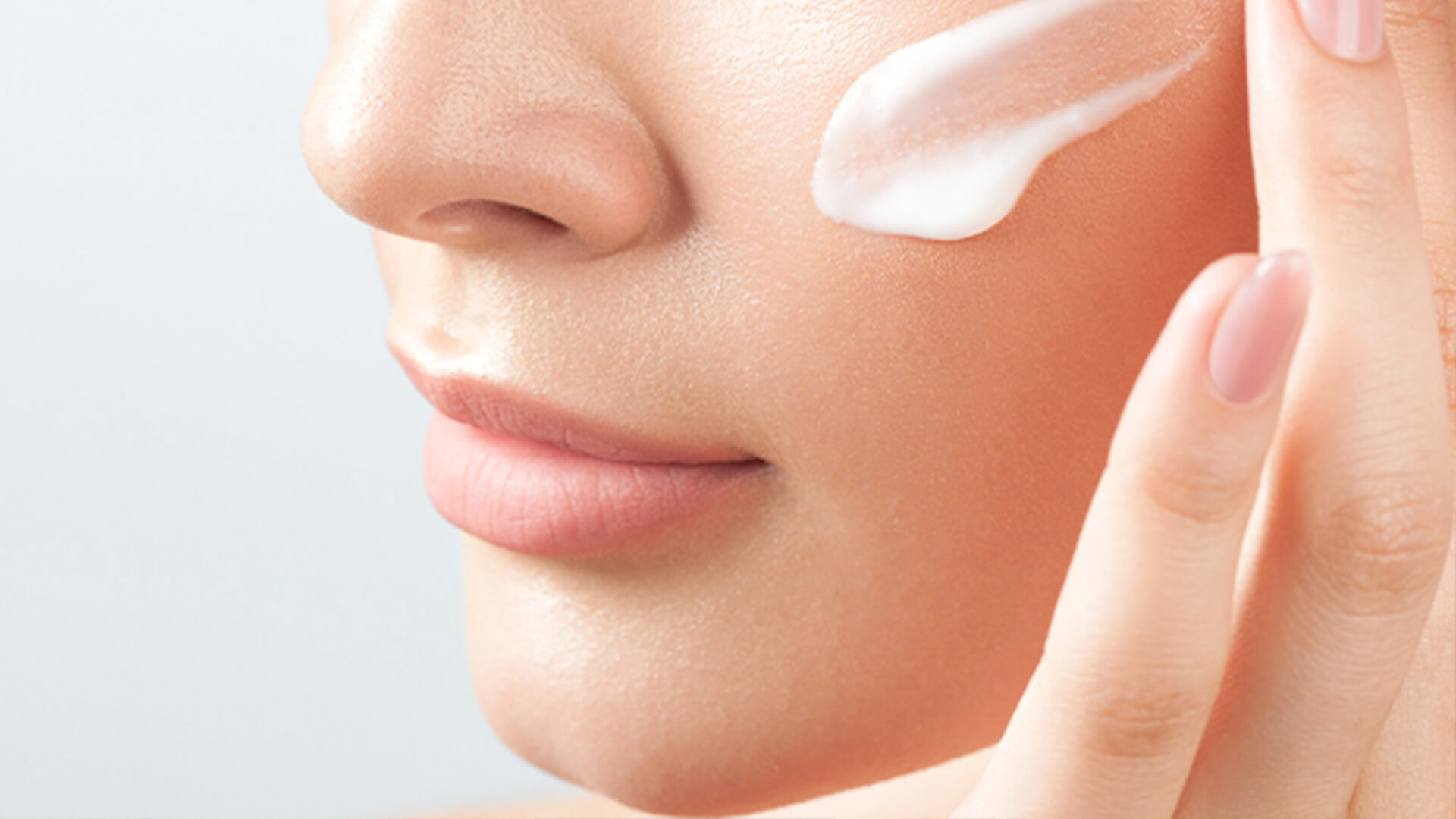
Benefits of placenta consumption.
Findings from research reported that nutrients that are delivered via the placenta could be retained even after the process of delivering the baby. The research also stated that the placenta contains collagen, elastin, laminin, and vitamins such as B1, B2, B3, B4, B5, B6, B7, and B12. All these vitamins, better known as B complex vitamins, play roles in cell metabolism, cell division, cell development, and energy production.
Due to this aspect as well, it is said that it gives a lot of benefits to skin health. Placenta is even used in clinical settings, such as for burn injuries and wound healing. In one study, researchers compared the efficacy of topical placental extract dressings versus povidone iodine dressings in diabetic wounds in a variety of patients. Placenta wound dressings could significantly accelerate the rate of wound healing when compared to povidone-iodine dressings as they contained amino acids, vitamins, and nucleotides, which accelerated wound healing recovery by seven to ten days.
Due to all these effects, many skincare products have recently incorporated placenta, be it from sheep or deer, in their skincare or supplement products.
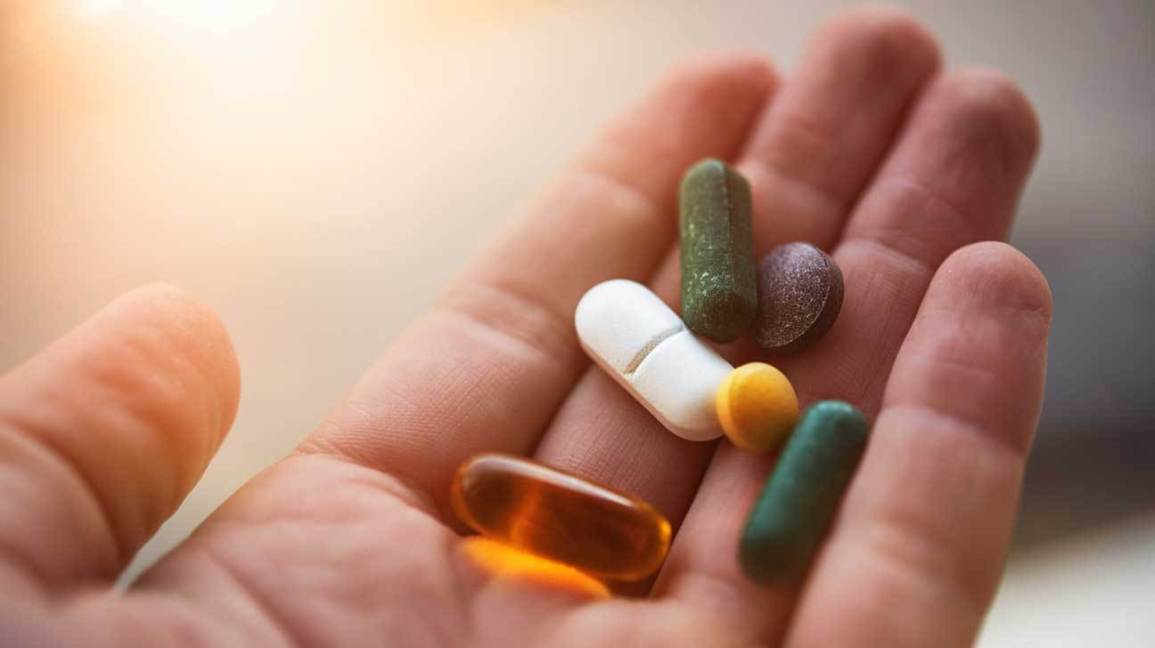
Caution with regard to placenta in the supplement
When it comes to placenta consumption as a health supplement, it is evaluated based on its safety of use and product quality. To be safe, sheep placenta products must be hormone-free. Because placenta typically contains hormones such as testosterone, oestrogen, and progesterone, being hormone-free is much more important for a placenta-based supplement. To confirm whether the products you are considering or consuming have been notified by the Ministry of Health, you can conduct an online product search on the National Pharmaceutical Registration Agency (NPRA). However, if the product is not listed in the DCA, it is not recommended that you consume it because its safety and quality have not been evaluated, and it may pose a health risk.
References

Vitamin C or its actual name is ascorbic acid, is the antioxidants used for various reasons. It becomes famous after the ‘Linus Pauling effect’ all around the world. The Nobel Laurette scientist claims that the consumption of vitamin C can treat various kind of diseases. Starting from that many manufacturers claim various benefits of Vitamin C consumption. Many researchers have then started to publish articles and studies on the benefits of vitamin C, but so far, in Malaysia the studies are still somewhat lacking for it to be used partly in treatment of a particular diseases.
Pandemic COVID-19
The outbreak of Coronavirus disease began at Wuhan, China in December 2019, thus far it has infected more that 46 million of individual all around the world and has caused more than 1.2 million of deaths. The symptoms of COVID-19 include fever, cough, dyspnoea, and myalgia. Some proportion of confirmed cases also developed severe diseases which involves acute lung injury and acute respiratory distress syndrome (ARDS) which can precipitated into multiple organ failure and death. This is also one of the reasons why infection occur to the high-risk individuals are more likely be getting serious or lead to complications as compared to healthy individuals.
It has been reported that the condition is called ‘cytokine storm’, a condition where the host immune response becomes dysfunction due to the attack from the virus to body’s immune system. In the absence of approved vaccine to prevent this from happening, management of critically ill COVID19 patients include administration of azithromycin (antibiotic) and hydroxychloroquine (malaria medicine), this is due to that there is no specific medication yet for COVID-19.
However, growing study interest is seen on the administration of COVID-19 recently, where even in Malaysia, Ministry of Health has conducted few studies to see whether the usage of vitamin C among critically ill COVID-19 patients is beneficial. The first study was conducted among 17 patients, the critically ill patients were given 1g of vitamin C in every 8 hour for three days. Although the findings are promising, but according to Deputy Health Minister, Datuk Dr, Noor Azmi Ghazali, it cannot still be used as management of critically ill COVID-19 patients as the sample size of the studies is too small for the result to be used.
Another study involving critically ill COVID-19 patients, divide between two groups of critically ill patients, the one administered with Vitamin C and the one without administration of vitamin C. The result found out that group with vitamin C administration has 57% lower on mortality rate, 9 days shorter of hospital stay, 5.6 days faster in successful extubating, and 7.5 days faster in weaning off oxygen support.
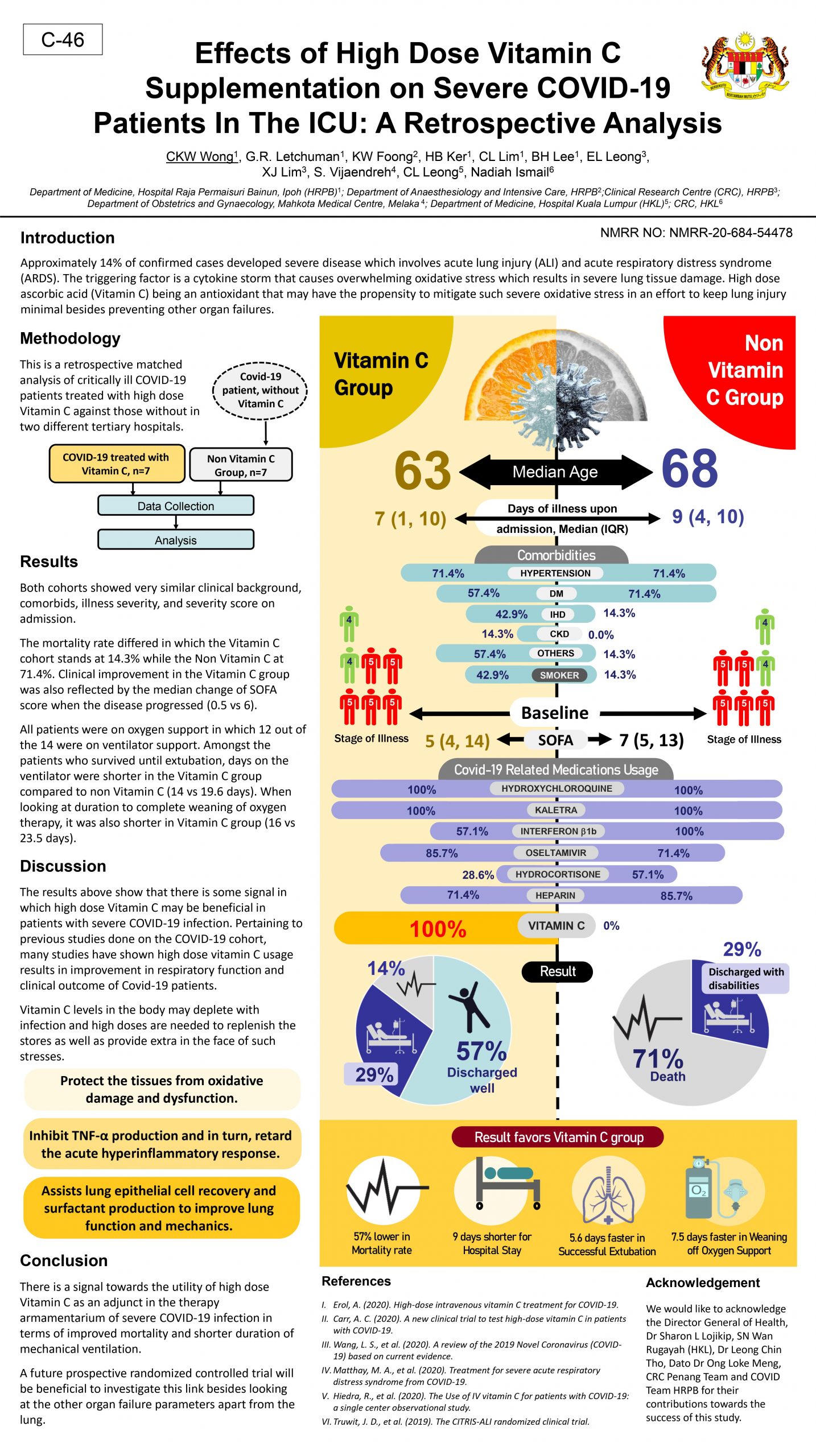
There is another unpublished study that was conducted among critically ill COVID-19 patients in two different tertiary hospital in Malaysia comparing individual treated with vitamin C against those who are not treated with vitamin C. Both groups show similar clinical background, comorbidity, illness severity, and severity score on admission. The finding shows that the vitamin C group has lower mortality rate (14.3%) as compared to the group without vitamin C (71.4%). Duration of days on the ventilator were also shorter in vitamin C groups compared to non-vitamin C group (14 vs 19.6 days). Similarly, the duration to complete weaning of oxygen therapy was also shorter in vitamin C group (16 vs 23.5 days). Since the result is very promising currently, a multicenter randomized controlled trial is underway in evaluating the effectiveness of high dosage of intravenous vitamin C for the treatment for severe COVID-19 patients.
Usage of Vitamin C as prophylaxis to COVID-19 for general population
Apart from vitamin C is a water-soluble vitamin it is also a potent antioxidant. It acts as free radical scavenger and has its anti-inflammatory properties, which influence cellular immunity and vascular integrity. Which explain why it is being studied as one of the treatments for COVID-19. As for general population, National Health Service (NHS) U.K. treatment guideline stated that for non critically ill COVID-19 individuals and for non-COVID19 individuals there is insufficient data to recommend usage of high dosage of vitamin C in combating COVID-19. This being stated because, in critically ill COVID-19 individuals they experience high oxidative stress and severe inflammation, which may be helpful with the administration of vitamin C but unlike non COVID19 and non critical COVID19 individuals.
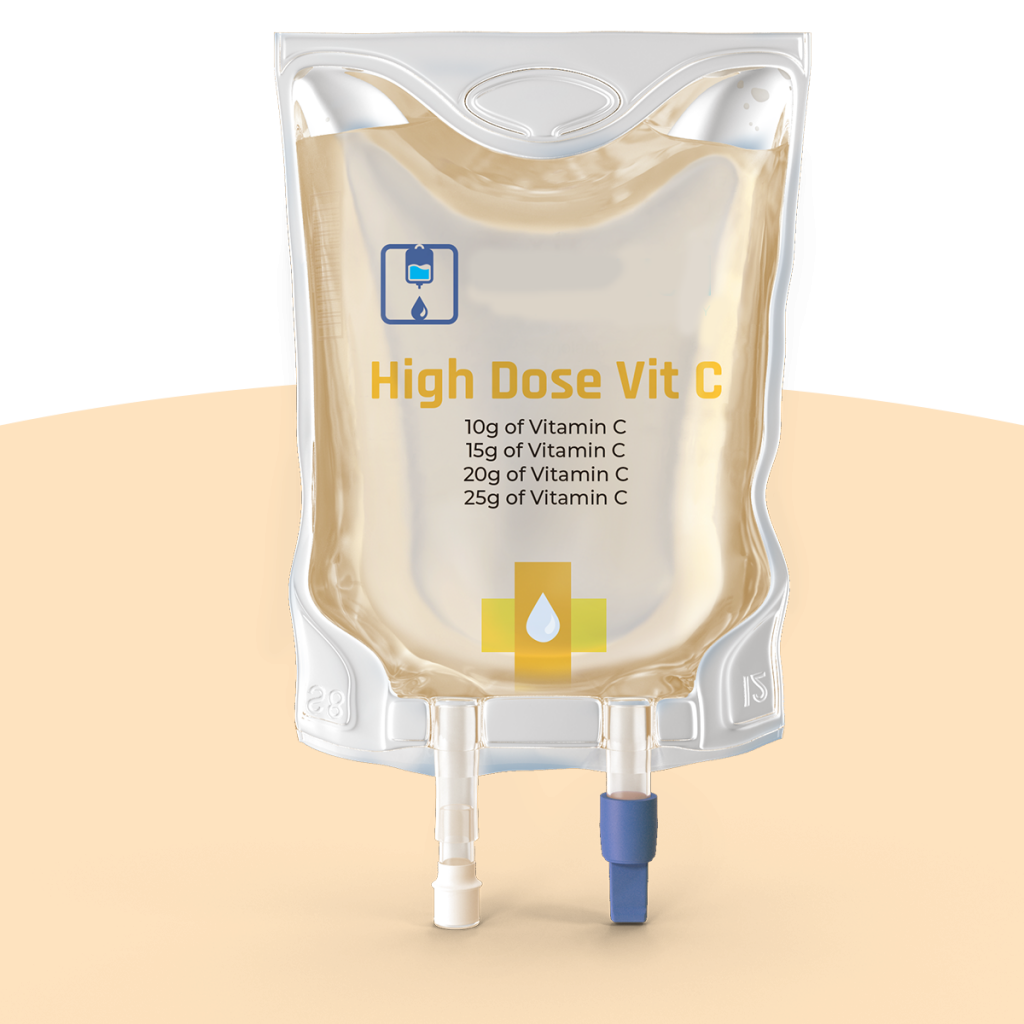
In general, sufficient consumption of vitamin C and healthy eating habit may helps with combating COVID-19 pandemic. A proper diet can help to ensure that the body is in the strongest possible state to battle the virus. Certain precaution with regards to food safety as well may helps in combating the virus although researchers have found that there is no source of virus contamination via food packaging or food. However, good food practices are always recommended to minimize the risk of contamination and to ensure that there is no window for the virus to weaken immune system.
References

Unsaturated fats can be classified into two main categories: Monounsaturated fatty acids (MUFA) and polyunsaturated fatty acids (PUFA). MUFA-rich foods include olive oil, canola oil, cashews, and groundnuts. On the other hand, PUFA can be further divided into Eicosapentaenoic acid (EPA) and docosahexaenoic acid (DHA), also known as omega-3 fatty acids. EPA and DHA are commonly found in fatty fish and algae.
Benefits of EPA and DHA
EPA and DHA offer a range of benefits, with one well-studied area being their connection to cardiovascular health. Multiple studies indicate that incorporating EPA and DHA-rich foods or supplements into the diet can lower triglyceride levels. Consequently, the American Heart Association (AHA) recommends a daily intake of about 1g of EPA plus DHA for individuals at high risk of heart disease. Joseph C. Maroon, MD, a professor in the Department of Neurological Surgery at the University of Pittsburgh School of Medicine and author of "Fish Oil: The Natural Anti-Inflammatory," emphasizes that sufficient omega-3 intake can reduce the inflammatory processes linked to various chronic conditions. This anti-inflammatory effect could potentially extend to diseases like arthritis, dry eyes, age-related macular degeneration (AMD), dementia, Alzheimer's, and cognitive issues. However, what about its relevance to COVID-19?
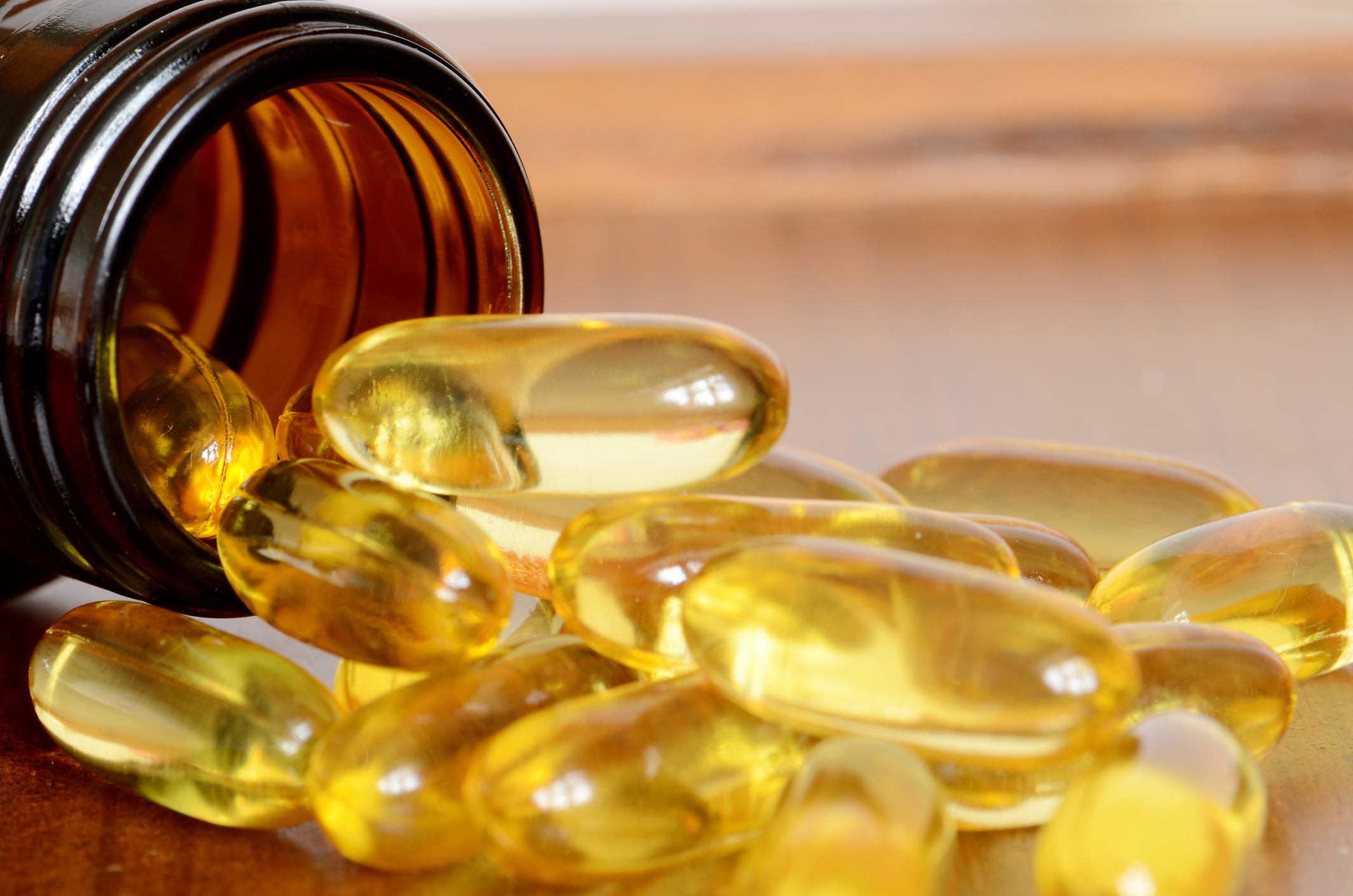
EPA & DHA in the Context of COVID-19
COVID-19 remains a novel disease, with many aspects still unknown to scientists. Among the potential management and treatment avenues being explored is the relationship between EPA and DHA and COVID-19. Numerous well-documented studies suggest that EPA and DHA's anti-inflammatory properties could have potential benefits for COVID-19 patients.
COVID-19 primarily targets the body's immune system, triggering an immune response to combat the disease. During this battle, the body releases cytokines, a phenomenon referred to as a "cytokine storm." Studies on sepsis patients have shown that administering EPA and DHA leads to the release of resolvins, which aid in restoring cellular function post-inflammation and tissue injury. This insight underlines why the administration and consumption of EPA and DHA-rich diets are being examined as potential mechanisms against COVID-19. Furthermore, a meta-analysis indicates that high EPA and DHA supplementation through parenteral and enteral nutrition can significantly reduce ventilator-free days, organ failures, ICU stays, and mortality rates among individuals with acute respiratory distress syndrome (ARDS). Given that ARDS is a common complication of critically ill COVID-19 patients, these findings suggest a potential positive impact.
Another critical parameter in assessing COVID-19 severity, particularly in critically ill patients, is coagulation ability. Non-survivors of COVID-19 are often those with heightened platelet aggregation and activation, resulting in a higher risk of life-threatening blood clotting. A study involving a moderate intake of three omega-3-rich fish species over 18 days showed improved bleeding time and reduced platelet aggregation, potentially decreasing thrombosis risk among COVID-19 patients. Similarly, a study supplementing healthy subjects with EPA for four weeks demonstrated decreased platelet activation, an early step in platelet aggregation.
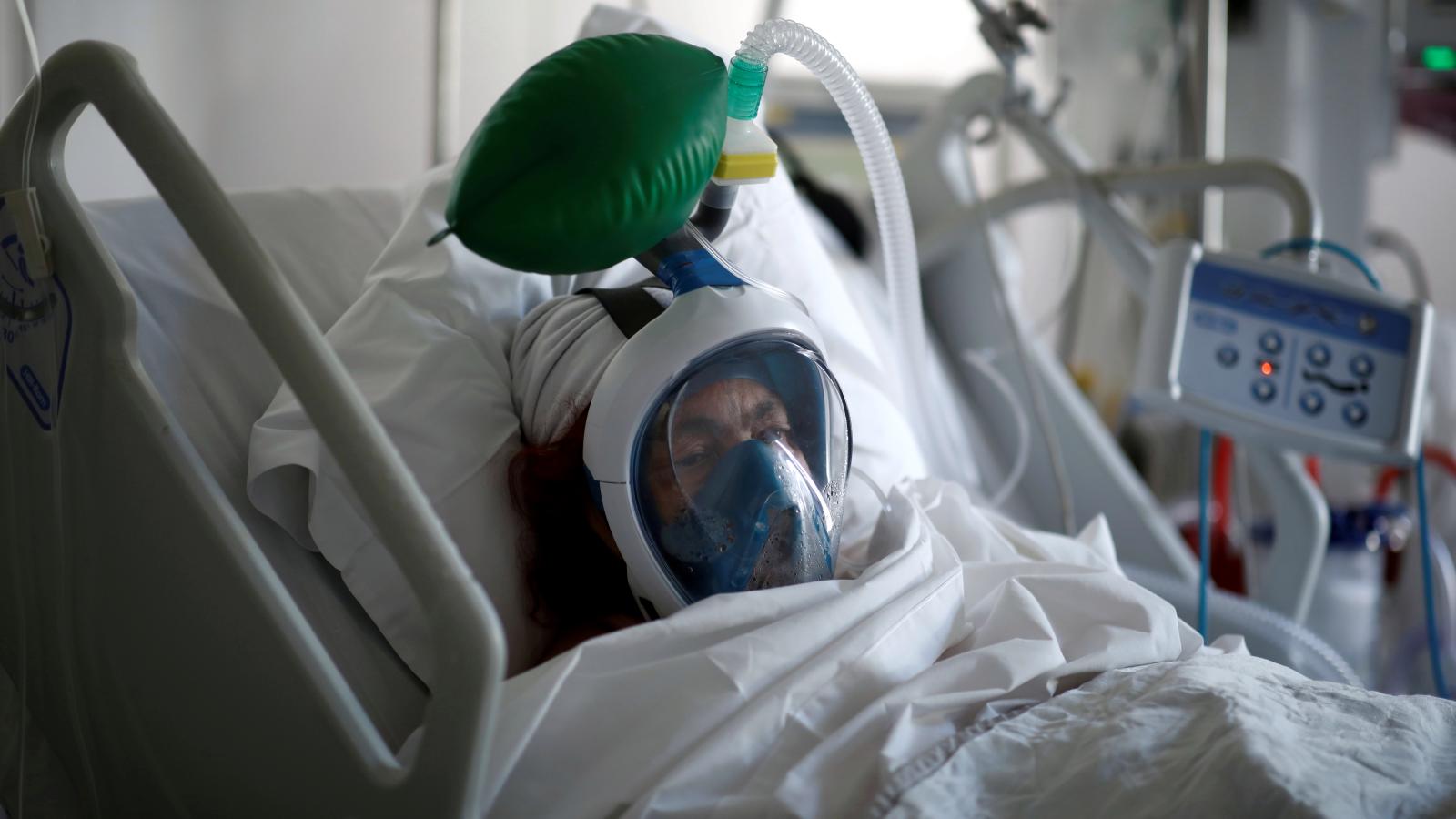
In conclusion, the administration or consumption of EPA and DHA could potentially aid critically ill COVID-19 patients. However, using EPA and DHA as a prophylactic among healthy individuals requires further investigation due to the limited understanding of the virus's pathology and its interaction with patients' characteristics during recovery. Therefore, it's advisable to conduct randomized controlled trials that consider supplementation type, dosage, individual characteristics, adverse effects, and potential combinations with medication and antioxidants.
References
National Institute of Health (NIH). Office of Dietary Supplements. Fact sheet for consumer. Omega 3 Fatty Acids. https://ods.od.nih.gov/factsheets/Omega3FattyAcids-Consumer/ (Accessed on Feb 4, 2021).
National Institute of Health (NIH). Office of Dietary Supplements. Fact sheet for Health Professionals. Omega 3 Fatty Acids. https://ods.od.nih.gov/factsheets/Omega3FattyAcids-HealthProfessional/ (Accessed on Feb 4, 2021).
Nourish by WebMD. What to know about Omega 3 and fish? Annie Stuart. https://www.webmd.com/diet/features/what-to-know-about-omega-3s-and-fish#1 (Accessed on Feb 4, 2021).
Rogero, M. M., Leão, M. D. C., Santana, T. M., de MB Pimentel, M. V., Carlini, G. C., da Silveira, T. F.& Castro, I. A. (2020). Potential benefits and risks of omega-3 fatty acids supplementation to patients with COVID-19. Free Radical Biology and Medicine.
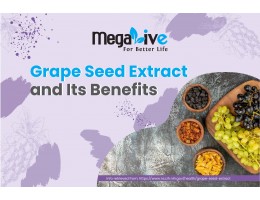
Grape seed extract (GSE) is derived naturally from grape seed and is commonly used in dietary supplements for a variety of purposes. It is created by removing, drying, and pulverising the bitter tasting grape seeds. It contains a lot of antioxidants like phenolic acids, anthocyanins, flavonoids, and oligomeric proanthocyanidins complexes (OPC). Grape seed extract, in fact, is regarded as one of the best sources of proanthocyanidins. As a result, grape seed extract provides numerous benefits to the human body, including disease prevention, protection against oxidative stress, tissue damage, inflammation, and many more. In this article, we will look in depth at the potential health benefits of grape seed extract (GSE) based on studies:
Wound healing activity and antioxidant properties.
Numerous studies have shown that grape seed extract contains a high level of antioxidants. Using punctured wounded mice, researchers discovered that mice treated with GSE in the wound affected area grew tissue faster than mice treated with only normal saline. Another difference between GSE-treated mice and placebo-treated mice was more organized tissue formation and a higher rate of collagen deposition.
Topical application of 2% GSE cream in the area of a post-surgery surgical wound heals the wound completely in an average of 8 days, compared to 14 days for placebo. This is due to GSE's vascular endothelial growth factor (VEGF) properties, which promote the regeneration of damaged blood vessels while increasing the amount of free radicals present at the wound site. Free radicals aid in the killing and removal of pathogenic bacteria and endotoxin from the site, as well as in the healing of wounds
Apart from wound healing and skin health properties, it also has anti-ageing properties. GSE proanthocyanidins delay skin ageing by reducing lipid oxidation on the skin structure.
Cardiovascular and antihypertensive properties.
Cardiovascular disorders (CVD) are among the major problems that arise due to modern, unhealthy lifestyles, which are the primary cause of death worldwide. It is a disorder that affects the condition and function of the heart and blood vessels in general. Changes in these two can result in cardiac arrest, heart stroke, hypertension, chest pain, and other complications. Studies show that GSE may prevent atherosclerosis (a condition where there is a build-up of fats, cholesterol, etc. in the blood vessel walls, which can restrict blood flow), inhibit or limit the oxidation of LDL (bad cholesterol), reduce inflammation, inhibit platelet aggregation, and lower blood pressure. It lowers blood pressure by suppressing oxidative stress and inhibiting the angiotensin-converting enzyme (ACE) and nitric oxide, which mediate vasodilation, hence making the constricted blood vessels dilate and improving blood pressure.

Antimicrobial activity
GSE has been shown to have antimicrobial properties; for example, when applied topically, resveratrol in GSE increases the production of cathelicidin, which inhibits the growth of Staphylococcus aureus. In another study, quercetin, caffeic acid, and quercetin-3-0-rutinoside in GSE were responsible for the inhibition of Listeria monocytogenes. It is also worth noting that GSE had the highest inhibition activity against almost all Listeria species. The review on the benefits of GSE also reported that the antimicrobial effect of GSE is attributed to changes in cell morphology and DNA content.
Cosmetic and nutraceuticals
Skin ageing is a natural process which occurs due to the external and internal factors involving genetic, hormonal, and environmental factors. GSE is rich in proanthocyanidin help to reduces the lipid oxidation of cellular structure of the skin and inhibit the production of free radicals. A study was carried out in which the anti-ageing effect of GSE was investigate. The study concluded that GSE has a promising role as an anti-ageing compound.
GSE help skin structure by strengthening the collagen-based tissue (by increasing the collagen cross links). It also increases the synthesis of collagen and the conversion of collagen from soluble into insoluble one.
In conclusions,
GSE has various benefits to health due to its high antioxidant properties, it is able to scavenge the free radicals which an essential feature that could help with various body functions.
References
10 Benefits of Grape Seed Extract, Based on Science. https://www.healthline.com/nutrition/grape-seed-extract-benefits (Accessed on March 15, 2021).

Vitamin C can be said to be the most popular micronutrient of all. It serves various functions, from immune health to skin health. As of late, many skin care products have incorporated vitamin C as one of the ingredients, or it stands alone in skincare products. Many studies found that topical application of vitamin C showed positive skin changes in improving skin complexion, improving skin hydration, fading out hyperpigmentation, and reducing the appearance of under-eye circles.
But, according to the study, there are various hindrances to the absorption of vitamin C applied topically, such as skin pH, penetration of vitamin C into skin layers, oxidation due to exposure to harsh environments before the skincare is even applied to the skin, and many more.
Which is why people started to dig? What about the consumption of vitamin C? Will it help with skin health even better?
A study on the roles of vitamin C in skin found that the consumption of vitamin C helps with skin health via various pathways.

The promotion of collagen formation
Vitamin C acts as a co-factor for the proline and lysine hydroxylase enzymes that stabilise the collagen structure in skin. In the skin, collagen formation is carried out mostly in the dermis; it requires the enzyme lysine hydroxylase to form collagen, which is dependent on vitamin C. Which is why consumption of a sufficient amount of vitamin C helps with intact-looking skin due to the formation of collagen.
The ability to scavenge free radicals and dispose of toxic oxidants
Another important role of vitamin C is that it acts as a potent antioxidant, which can neutralise and remove oxidants from environmental pollutants and after exposure to ultraviolet (UV) radiation. But most intervention studies are carried out to see the effect or prevention of the damage using a cocktail of other ingredients as well (such as glutathione and vitamin E). Which is why it is said that vitamin C is particularly effective when it is used in conjunction with vitamin E.
Inhibition of melanogenesis.
Vitamin C and its derivates, including the weak one (magnesium phosphate ascorbyl derivatives), have been shown to treat skin hyperpigmentation in conditions such as melasma, better known as age spots. This is due to the fact that it has been shown that it reduces melanin synthesis in the skin by interfering with the action of tyrosinase (the rate-limiting enzyme in the production of melanin).
These are all pathways through which vitamin C could help with skin health. During the course of life, the skin is exposed to various challenges that affect its structure, function, and appearance, including:
Ageing: loss of elasticity and wrinkle formation
Exposure to elements leading to discoloration, dryness, and accelerated wrinkles.
Chemical insults such as soaps, hair dyes, and detergents
Direct injury, such as wounding or bleeding.

With all the factors from internal and external being addressed, it is thought that it can make things clear that the consumption of vitamin C is able to help with the prevention of further skin damage but at the same time must limit or reduce external factors that cause harm to skin; after all, prevention is better than cure, right?
Apart from this, 16 studies that investigate the consumption of vitamin C supplements or foods show that it improves skin appearance by improving skin elasticity, facial wrinkling, roughness, and discoloration.
Another double-blind nutrition intervention using cocktails of supplementation such as that high in antioxidants such as 10mg trans resveratrol, 60 mcg selenium, 10 mg vitamin E, and 50 mg vitamin C in papaya extraction among populations between 40 and 65 years old shows improved skin surface, brown spots, evenness, moisture, and elasticity after 90 days of supplementation.
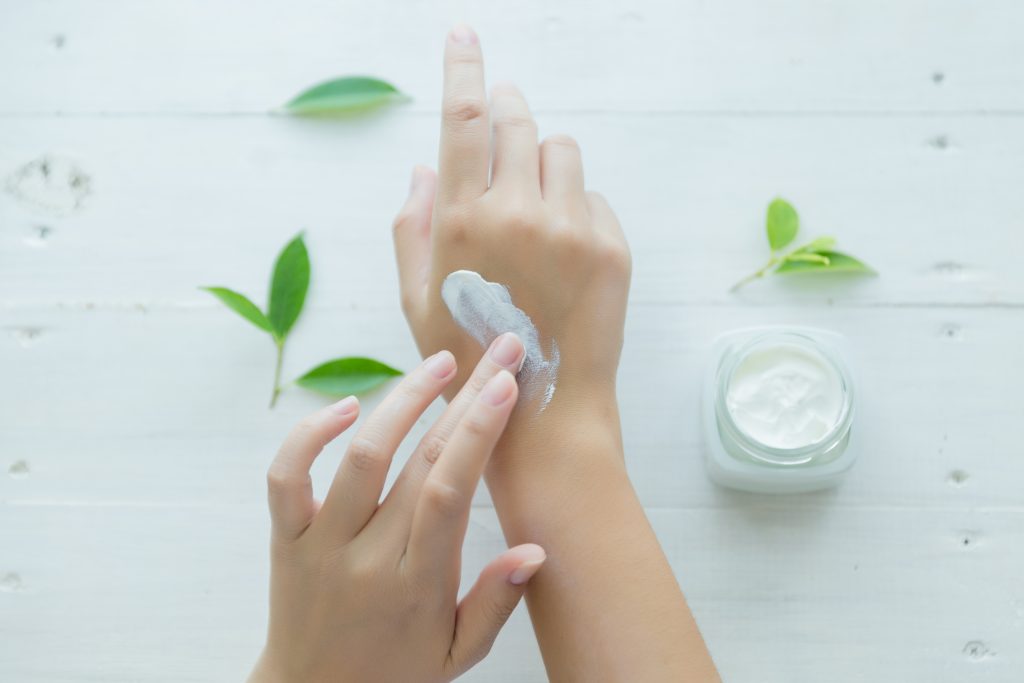
Based on all these data, the study stated that the efficacy of consumption of vitamin C is better at improving skin health as compared to topical application only. As the efficacy of topical application is based on the prior skin condition. In one study, it was suggested that when the health status is already optimal, meaning there is enough vitamin C, the topical application of vitamin C will not be absorbed into the skin. Hence, ‘beauty from the inside" via nutrition may be more effective than topical application.
References
Pullar, J. M., Carr, A. C., & Vissers, M. (2017). The Roles of Vitamin C in Skin Health. Nutrients, 9(8), 866. https://doi.org/10.3390/nu9080866.
Radiance by WebMD. Benefits of Vitamin For Your Skin Health. https://www.webmd.com/beauty/ss/slideshow-benefits-of-vitamin-c-for-skin (Retrieved on May 3rd, 2021).
11 Reasons to add vitamin C serum to your skincare routine. https://www.healthline.com/health/beauty-skin-care/vitamin-c-serum-benefits#how-to-use (Retrieved on May 3rd, 2021).

Collagen is a type of protein that is necessary for formation of skin, nails, hair, cartilage, bones, teeth, and joint. It is in most of the organs in the body. It is the tissue that holds ligaments, joints, and bones together. Some collagen acts as a protective layer for organs in the body, such as the kidneys.
As we age, the production of collagen in the body decreases, it causes skin to become wrinkled. For certain people, even when they are still young due to exposure of skin to various harsh environments and conditions both internally and externally, collagen level in skin tend to diminish even quickly.
Collagen and skin
Collagen is the central element in the dermis layer (one of the skin layer), it comprises about 70%-80% of skin. Whenever skin is wounded, collagen helps in wound healing through providing an ideal environment for cells to proliferate, which will help with the healing process. It also plays a significant role in all phases of wound healing, including haemostasis, inflammation, proliferation, and remodelling.
Studies shows that application of collagen in wounded skin is very beneficial since the collagen is highly porous and have interconnected pore structure. It is said that collagen is beneficial to wound healing to the extent of, there is study noted that collagen potentially can be used for skin substitute in full thickness wound healing.

Collagen and hair
Building block of hair is protein keratin, by consuming collagen rich food and/or collagen supplement, it will then be break down into variety types of amino acids compound.
There are 11 types of non- essential amino acids, which body can produce itself, and there are 9 types of essential amino acids which need to be consumed from diet since body cannot produced it. Collagen is made up from three types of essential amino acids, which is why it is best to consume collagen, collagen rich foods, or variety of protein rich foods, so you may get different types of amino acids compound especially the essential amino acids compound which body cannot synthesized, so that we can improve level of collagen in the body.
Collagen helps to fight damage to hair follicles by functioning as antioxidants which helps to fight free radical. Free radical could develop due to stress, smoking, dietary habits and many more. These are all factors that we are at risk of everyday, by consuming collagen it helps to reduce damage in the hair follicles thus lead to a healthier hair growth. It may also help to prevent thinning due to ageing and slow down the appearance of greying.

Collagen and nails
A study that was conducted among men and women who experience brittle nail syndrome, where their nail exhibits rough surface, raggedness, and peeling, noted that consumption of collagen promoted an increase of 12% nail growth rate and a decrease of 42% in the frequency of broken nails. Additionally, 64% of participants experienced an improvement 4-week post treatment. Most participants (80%) agreed that the use of collagen help with their brittle nail syndrome.
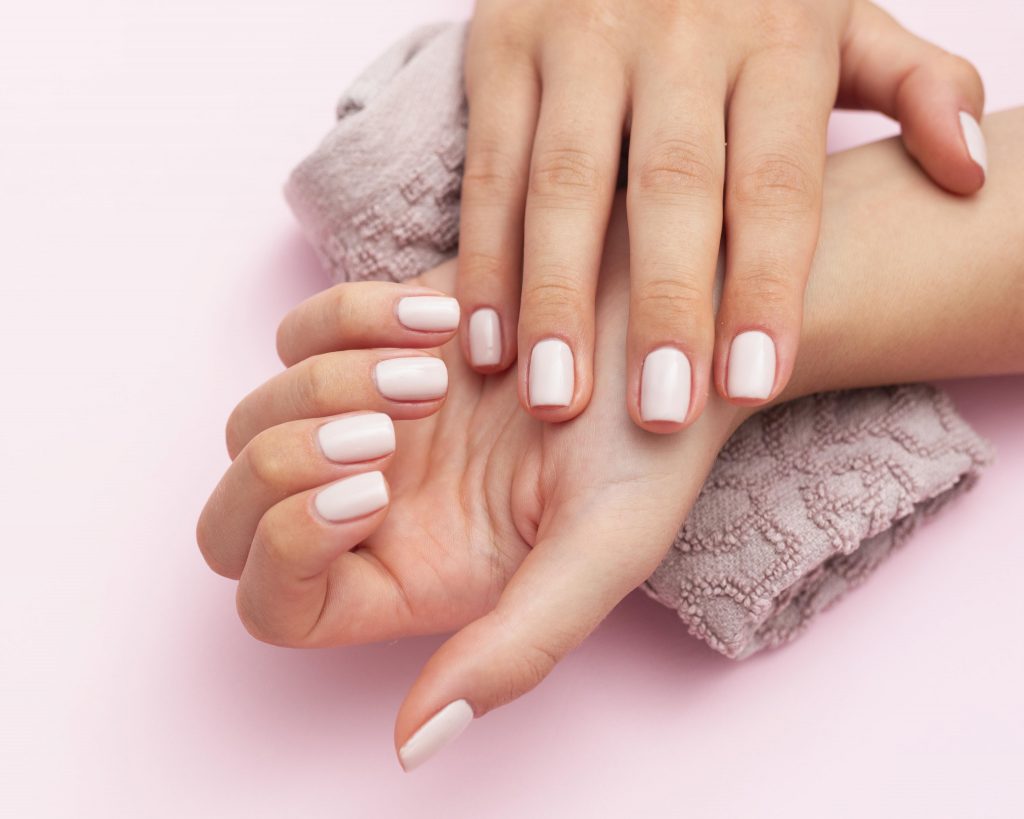
In conclusion, collagen consumption may helps with hair, nails, and skin condition since it is the building block of it. So, apart from practicing ‘prevention is better than cure’ measure once you have seen the symptoms in your hair, skin and nails, it is still not too late to help it with collagen.

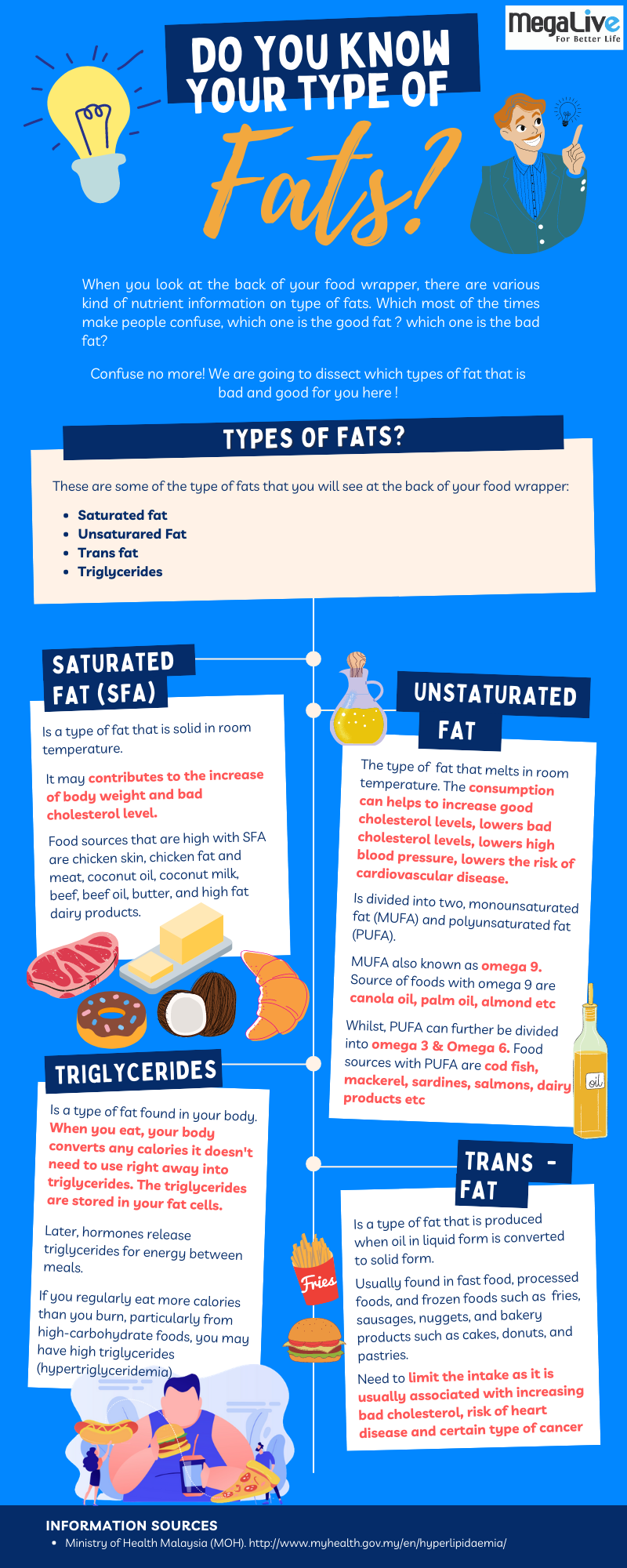
The infographic above explains the types of good and bad fats. But what about the differences between Omega 3, 6, and 9? All these three fats can be considered good fats, but there are certain things that distinguish them from one another.
MUFA or Omega 9
Monounsaturated fatty acid (MUFA), also known as omega 9, is named because of the double bond position, which is on the ninth position from the omega end. It is a type of fat that is found in vegetable and animal fats such as canola oil, sunflower oil, olive oil, and nuts. Unlike polyunsaturated fatty acids (PUFA), omega-9 is a non-essential fat, which means the body is able to produce these types of fat. However, there are also benefits when it is obtained from food, such as reducing the risk of cardiovascular disease and stroke, reducing LDL cholesterol (bad cholesterol), increasing HDL cholesterol (good cholesterol), and helping to eliminate plaque buildup in the arteries, which can cause heart attacks and strokes.
PUFA or Omega 3 & Omega 6
Polyunsaturated fatty acids (PUFA) can be divided into Omega 3 and Omega 6. The difference between these two is that the position of the double bond for Omega 3 is in the third position from the end, whereas for Omega 6, it is in the sixth position from the end.
Among the types of Omega 3 with extensive scientific research are eicosapentanoic acid (EPA), docosahexaenoic acid (DHA), and alpha-lipoic acid (ALA). The difference between these three types of Omega-3 fats is the number of carbon atoms: 18, 20, and 22 for ALA, EPA, and DHA, respectively. ALA can be converted to EPA and then to DHA, but the conversion, which usually occurs in the liver, is less than 15%, which is why it is recommended to consume EPA and DHA directly from foods or dietary supplements. ALA is present in plant oils such as flaxseed, soybean, and canola oils. DHA and EPA are present in fish, fish oils, and krill oils. But the DHA and EPA in krill oil do not originate from krill but rather from the ingestion of microalgae.
Whilst, among the types of Omega 6 are linolenic acid (LA) and arachidonic acid (AA), The difference between these two is the position of the double bond in the omega-6 fatty acid chain. Linolenic acid (LA) is the same as ALA; it is an essential fatty acid that cannot be produced by the human body. Sources of food with LA are soybean oil, corn oil, safflower oil, peanut oil, cottonseed oil, and rice bran oil. While the sources of food for AA are peanut oil, meat, eggs, and dairy products,
Omega 3 and Omega 6 are beneficial for cardiovascular diseases because they can help manage cholesterol levels, triglycerides levels, and blood pressure levels. There is also certain supporting data that states that it can help with reducing weight and waist size, improving infant brain development in the foetus, and fighting inflammation. However, other than for cardiovascular health, the finding is quite inconclusive. But as for Omega 3 and 6 (PUFA) and heart health, the American Heart Association (AHA) recommends that 8–10% of calories should come from PUFA, as there is evidence that eating more PUFA—up to 15% of daily calories—in place of saturated fat can lower the risk of heart disease.
The diagram below shows the comparison between these three types of good fat:
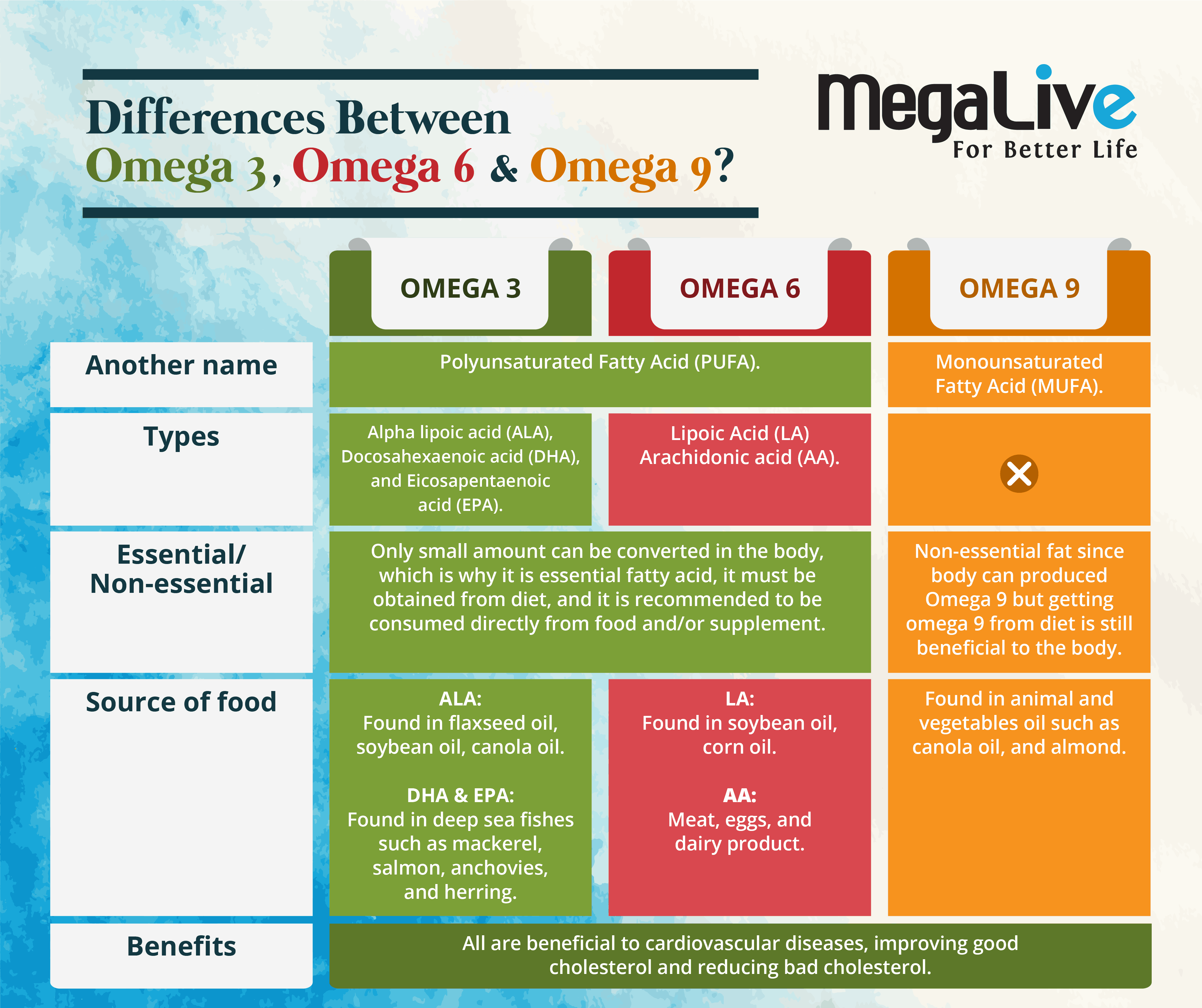
All in all, Omega 3, 6, and 9 are beneficial for cardiovascular health, as they can help with lowering LDL levels (bad cholesterol), increasing HDL levels (good cholesterol), and helping with blood pressure levels. Several other studies also mentioned that certain good fats can help with inflammatory diseases such as joint pain and skin diseases such as eczema. However, consumption of all these fats must be in balance since overconsumption of them can have serious health effects! However, replacing bad fat (or even good fat) with refined carbohydrates does not help your health either. It is so important to note that everything must be in balance, and consuming healthy food is not about one type of food only; it is about variety, quality, and the food source as well!
References
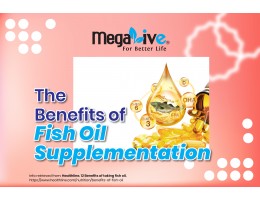
Consumption of fish is important as it is a good source of protein. It is recommended to consume one fish per day, according to the Malaysian food pyramid. This is because the consumption of fish in Malaysia is rarely equated with a risk of contamination with mercury, etc., unlike in western countries. This might be due to the types of fish and sizes of fish that we are consuming here as compared to other parts of the world. It is said that the bigger the fish, the more contamination it has; hence, there is a recommendation for pregnant mothers to consume small fish rather than big fish to avoid the risk of contamination.
Research on the benefits of fish oil supplementation also varies greatly, which is why in this article we are going to list out who might need a fish oil supplementation in their daily lives!
The benefits of ingesting fish oil can differ significantly between studies. A study found a connection between these omega-3 fatty acids and mental health disorders and that EPA and DHA can speed up brain development even in young children. Additionally, studies have demonstrated that it can help treat cardiovascular diseases, joint pain, and eczema. The question is, is it true that all of these effects can be obtained from fish oil consumption? (1)
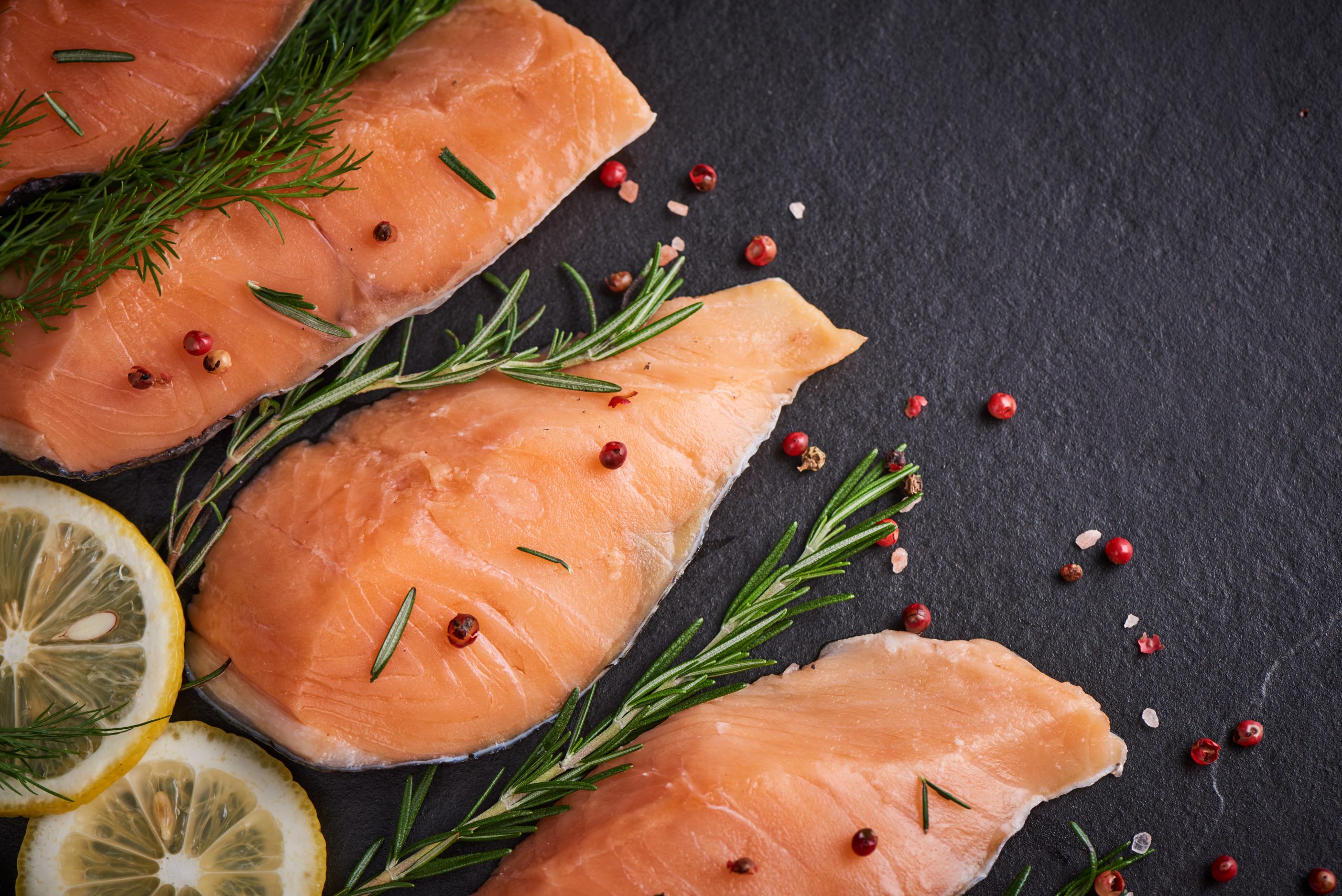
Individual with mental health problems/disorders
In three lengthy studies spanning the years 1988 to 2008, researchers looked at the relationship between fatty acid intake and suicide risk among more than 205 000 participants. They discovered no proof that eating fish or fatty acids reduced the risk of suicide. "The vast majority of earlier research on whether fatty acid intake has any positive effects on mental health has been based on results from depression screening. The only time this relationship has been studied with concrete data on suicide mortality is in our study, which is also the largest of its kind.” (2)
While a study found that eating a balanced diet and exercising regularly are better for brain health than taking fish oil or omega-3 fatty acid supplements, A study of 3073 elderly people at risk of macular degeneration, an age-related cause of vision loss, found little benefit from omega-3 supplements on memory. Omega 3 supplements or a placebo were given to study participants at random for a five-year period. According to the researcher, a healthy diet cannot be replaced by a supplement; therefore, if you eat a healthy diet rich in fruits, vegetables, and marine fish, you probably don't need to take a fish oil supplement. According to this study, the overall dietary pattern is more important than a single nutrient (2).
Individuals with cardiovascular disease
Recently, there have been many studies suggesting that Omega 3 will not lower the risk of heart problems. To answer this, Dariush Mozaffarian, cardiologist from Harvard Medical School, said that he gathered 20 previous studies involving more than 68, 000 patients since 1989 and found that, overall, fish oil supplements did neither harm nor good since they did not significantly reduce people’s risk of mortality, cardiac death, heart attack, or stroke. But according to him, the research link between fish oil supplementation and heart problems is rather complex since it does not only take fish oil to shield the heart from various problems and diseases; it also takes weight status, exercise frequency, cigarette or substance use, and many more (3,4,5).
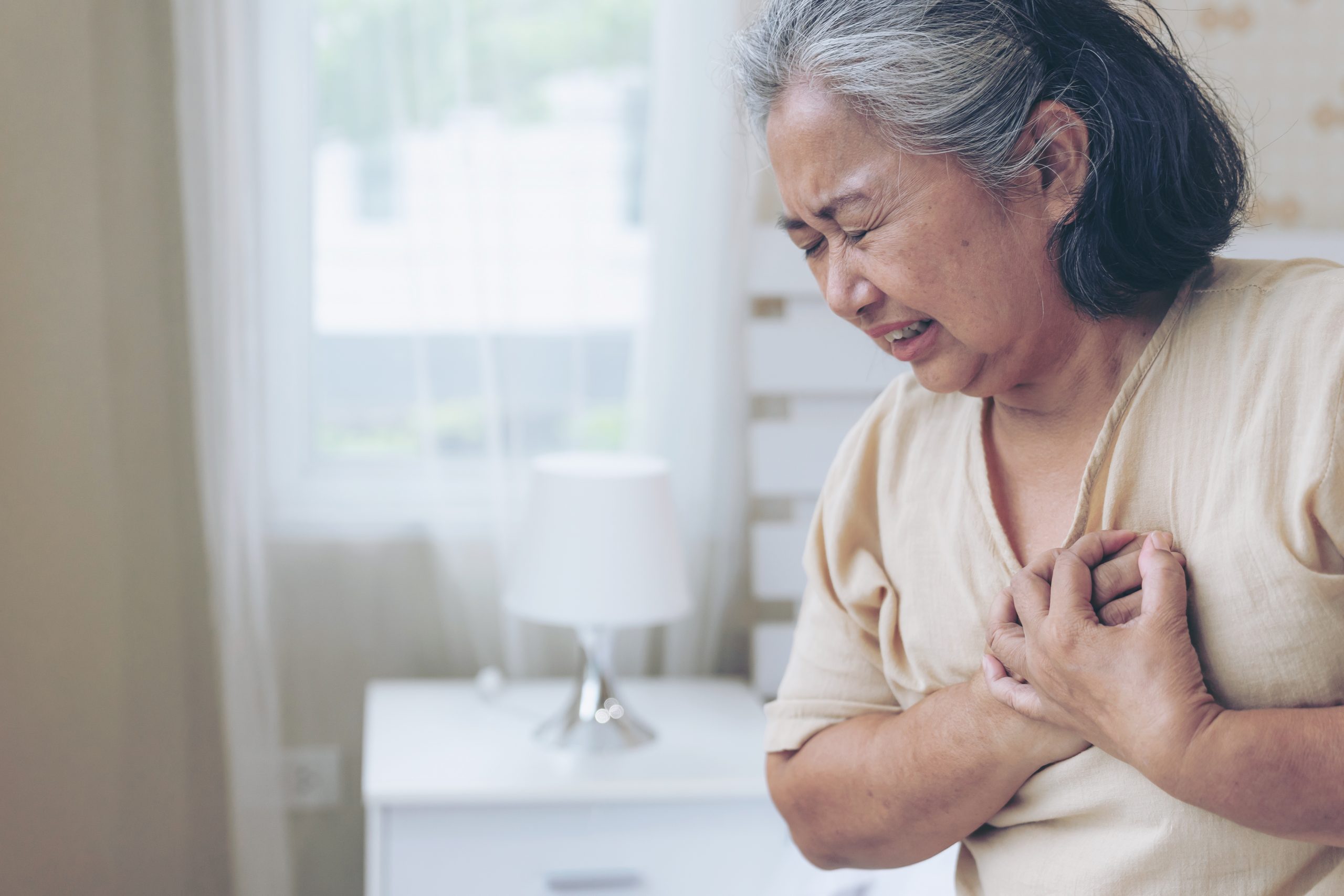
Which is why, interpreting the study, we would still recommend customers and patients consume more fish as a first-line measure. But if you do not like fish, or you feel like your consumption of fish is not enough, or you simply want to be sure that your body is getting omega 3, there is no harm in taking fish oil; it will certainly help with the essential nutrient, since omega 3 is a nutrient that your body cannot produce and can only get from diet (3,4,5).
Individuals with skin problem
A systematic review for the treatment of atopic dermatitis or eczema using fish oil supplementation is very scarce; the studies available are all small-sample studies. Not only are these three studies small, but they are also described as poor methodological studies by the reviewer, as they have many confounding factors. However, the outcomes of these studies show positive outcomes for eczema and overall daily living as compared to placebo (6, 7).
Another convincing relationship between consumption of fish oil and skin health is that in a study where pregnant women were given fish oil during pregnancy and followed up for 6 years, it was found that consumption of fish oil during pregnancy led to a positive skin health outcome for babies skin. The study also concluded that maternal supplementation with fish oil might have prophylactic potential for long-term prevention of asthma in offspring (6, 7).
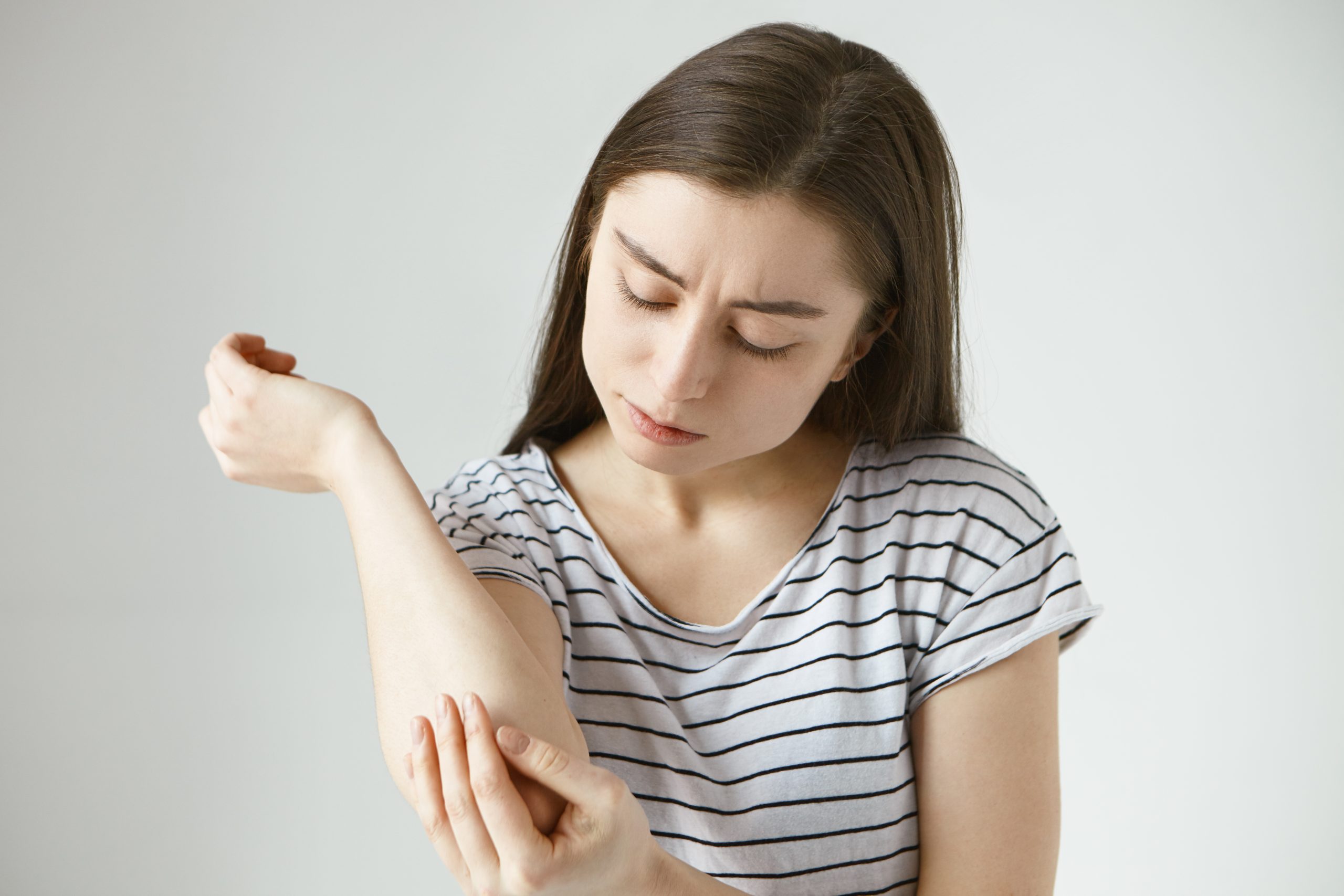
In conclusion, consumption of fish oil has mixed results in studies depending on what kind of problem we are looking to solve with fish oil. Since there are various factors influencing a particular health problem, There is no magic pill in this world, honey! You need to, however, eat healthily, consume a lot of vegetables and fruits, and exercise, but if you think that you do not get enough omega 3 from your diet because you dislike fish, are afraid to consume fish regularly due to contamination, etc., or simply would like to make sure that your body has enough omega 3, then there is no harm in taking fish oil supplementation. It's just that in order to make sure you get the right omega 3 for your body, buy it from a pharmacy, make sure the product has a Ministry of Health (MOH) notification number, and simply ask a healthcare professional which omega 3 supplementation suits you, simply for the dosage and perhaps current medication that you are on, and you are good to go!
References
Harvard T.H Chan. School of Public Health. Fish: Friend or Foe? https://www.hsph.harvard.edu/nutritionsource/fish/
Harvard T.H. Chan. School of Public Health. No mental health benefit from fish oil. https://www.hsph.harvard.edu/news/hsph-in-the-news/no-mental-health-benefit-from-fish-oil/\
Harvard T.H. Chan. School of Public Health. https://www.hsph.harvard.edu/news/hsph-in-the-news/fish-stroke-risk-mozaffarian/
Harvard T.H Chan. School of Public Health. Major Meta Analysis in Clinical Trial Omega 3 Supplemeny link with lower risk of CVD. https://www.hsph.harvard.edu/news/press-releases/in-major-meta-analysis-of-clinical-trials-omega-3-fish-oil-supplements-linked-with-lower-cardiovascular-disease-risk/
Harvard T.H. Chan. School of Public Health. Fish Oil Supplementation and Heart Health. https://www.hsph.harvard.edu/news/hsph-in-the-news/mozaffarian-fish-oil-supplements-heart-health/
Schlichte, M. J., Vandersall, A., & Katta, R. (2016). Diet and eczema: a review of dietary supplements for the treatment of atopic dermatitis. Dermatology practical & conceptual, 6(3), 23–29. https://doi.org/10.5826/dpc.0603a06
Huang, T. H., Wang, P. W., Yang, S. C., Chou, W. L., & Fang, J. Y. (2018). Cosmetic and Therapeutic Applications of Fish Oil’s Fatty Acids on the Skin. Marine drugs, 16(8), 256. https://doi.org/10.3390/md16080256

Coenzyme Q-10 (CoQ-10) is a naturally occurring quinone found in all organisms, from bacteria to mammals. It was discovered in 1940 and isolated in 1957 from the mitochondria of the beef heart. Coenzyme Q10, also known as Coenzyme Q, CoQ, CoQ10, Ubiquinone, Ubiquinone-Q10, Ubidecarenone, or Vitamin Q10, is a type of coenzyme. The number of side chains distinguishes the different types of coenzyme Q. CoQ10 is the most common coenzyme Q. CoQ10 is present in all human tissues, though its level varies.
Why do we need CoQ10?
CoQ10's main function is to act as an energy transfer molecule, where it is a co-factor in the production of energy. Essentially, all cellular functions are dependent on an adequate supply of energy, which explains why coq10 is vital for all tissues and organs. CoQ10 is also one of the most significant lipid antioxidants that prevents the generation of harmful substances in the body, such as free radicals, which can lead to the modification of proteins, lipids, and DNA.
Antioxidant is defined as a substance that inhibits the oxidation process or is a scavenger of free radicals that are produced by normal body processes, hence making the body more stable.
Due to its function as antioxidants, not only can it help neutralize free radicals and prevent the damage caused by free radicals, but it can also improve energy and augment the immune system.
Who needs CoQ10?
There are certain individuals who need to consume more CoQ10 as the amount in their bodies is diminishing.

How much do we need CoQ10?
A typical CoQ10 dosage is about 30–90 mg per day, taken in divided doses, but the recommended amount can be as high as 200 mg per day. CoQ10 is a fat-soluble antioxidant, so it is better absorbed when taken with a meal that contains oil or fat. The clinical effect of CoQ10 may take up to eight weeks.
Food source with CoQ10?
Primary dietary sources of CoQ10 include oily fish (such as salmon and tuna), organ meats (such as liver), and whole grains. Most individuals obtain sufficient amounts of CoQ10 through a balanced diet, but supplementation may be useful for individuals with particular health conditions. CoQ10 is available as a supplement in several forms, including soft gel capsules, oral spray, hard shell capsules, and tablets.
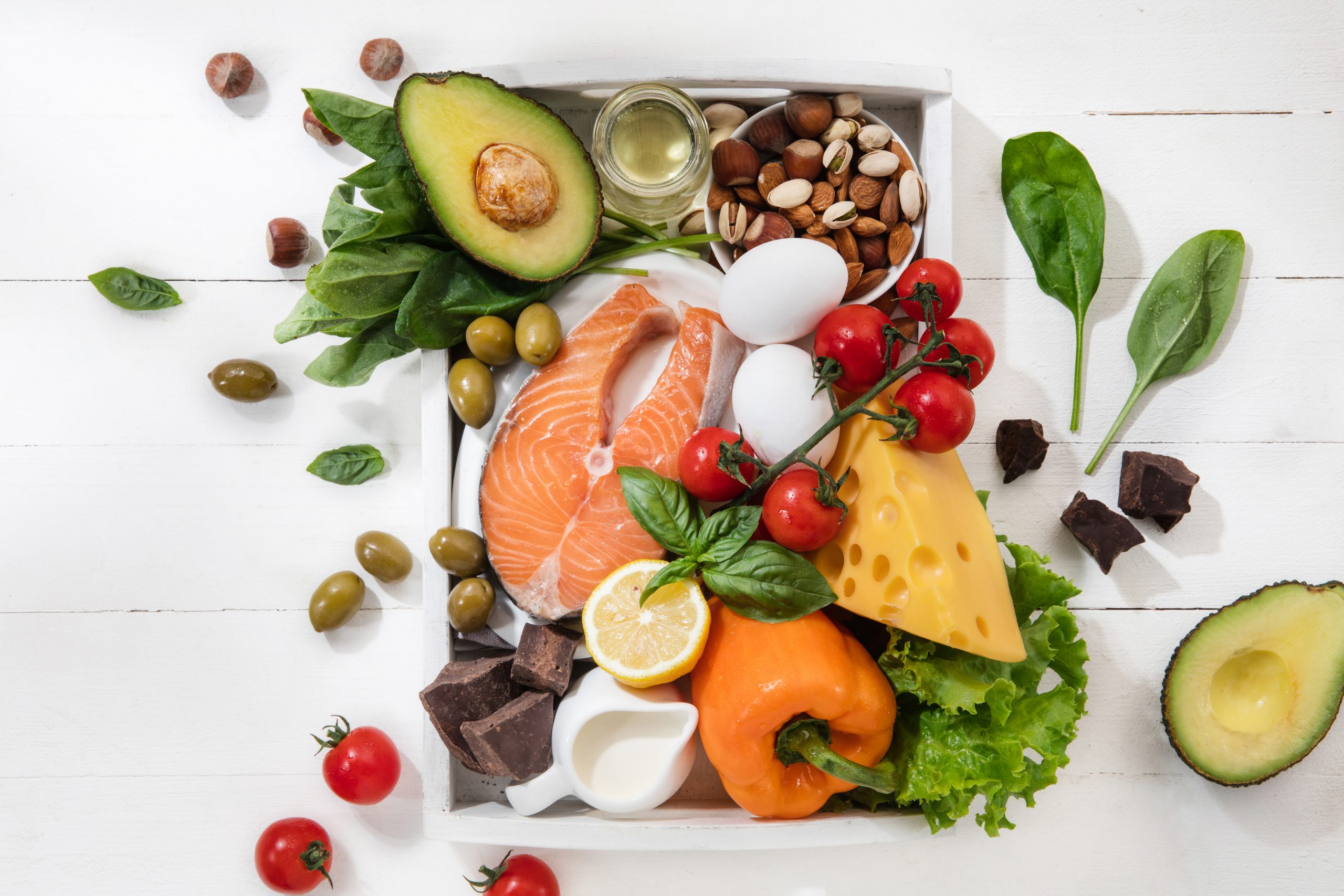
Safety precautions
Consumption of CoQ10 might not really be suitable for individuals who consume warfarin medication, pregnant women, or breastfeeding mothers.
References

Coenzyme Q10 (CoQ10) is a substance that is naturally present in
the human body, with the highest levels in the heart, liver, kidneys, and
pancreas. It is also naturally present in the foods that we eat, such as cold-water
fish like tuna, salmon, mackerel, and sardines, vegetable oils, and meats.
Other than these types of foods, individuals can consume CoQ10 through
supplementation. Here are some of the benefits of consuming CoQ10 for your
heart's health:
Therapeutic benefit in hypertension.
Hypertension, also known as high blood pressure, is a condition in which the blood pressure rises above 120/80. CoQ10 has been shown in animal model studies to significantly reduce blood pressure levels while having no effect on other hypertension-related parameters such as plasma renin, serum/urine sodium and potassium, or urinary aldosterone. It is also suggested that varying COQ10 dosage results in a reduced need for medication. In a human study, taking 60 mg of CoQ10 twice daily for 8 weeks reduced blood pressure, plasma inulin, glucose, and several lipid compounds. Other human studies have ranged from 100 to 225mg/day for 4.4 to 10 months.

Therapeutic benefit in coronary artery
disease.
Coronary heart disease (CHD) occurs when the
coronary arteries that supply oxygen-rich blood to your muscles become narrowed
due to a gradual buildup of fatty material within their walls. The condition is
also referred to as atherosclerosis. Pretreatment with CoQ10 has been shown in animal
studies to reduce myocardial ischemia (occurs when blood flow to the heart
muscle is obstructed by a partial or complete blockage of plaque buildup
(atherosclerosis)) and cardiac dysfunction. In human studies, a dose of 300
mg/day for 7 days straight improves heart efficiency as measured by oxygen
consumption per energy formed. Another study on humans using a 150mg dose
of CoQ10 found that the supplement increased treadmill exercise tolerance.
However, because these two studies involved a small number of subjects, they
are not statistically significant.
Therapeutic benefit of congestive heart
failure
A small study of 17 patients with congestive
heart failure discovered that using 30 mg/day of coenzyme Q10 improved the
patients' condition, with 53% of the patients becoming asymptomatic after four
weeks of treatment (no symptoms). Another large-scale study involving 2664
patients who took 50-100mg/day of coenzyme Q10 for three months found that 54%
of patients improved in their symptoms of insomnia, nocturia, and
vertigo.

Is CoQ10 recommended for heart health
prevention and treatment?
In conclusion, it appears that CoQ10 may be
beneficial for heart health prevention and treatment, particularly for people
with coronary heart disease, hypertension, and congestive heart failure. This
is due to its ability to prevent LDL oxidation. It also appears that the
majority of patients with heart disease are deficient in coenzyme Q10, which
can lead to a variety of heart-related complications later on.
References
1.
Sarter, B. (2002).
Coenzyme Q10 and cardiovascular disease: a review. Journal of
Cardiovascular Nursing, 16(4), 9-20.
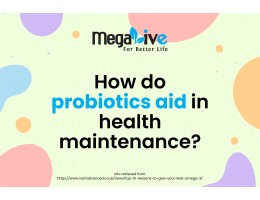
Probiotics can help to maintain health in a variety of ways. The first is by maintaining a healthy microorganism community. Second, by assisting the body's community microorganisms in returning to a healthy state after being disturbed.
Other than bacteria, the body contains fungi, parasites, and viruses. All of these "bugs" coexist peacefully and naturally in a healthy person, with the greatest number found in the intestines. Scientists refer to all these coexisting "bugs" in our bodies as the microbiome.
The microbiome plays a key role in promoting the smooth daily operation of the human body. It consists of both helpful and potentially harmful microbes. The disturbance in the balance between the helpful and harmful microbes may arise due to infectious illnesses, certain diets, prolonged use of antibiotics or other bacteria-destroying medications, which can lead to the body becoming more susceptible to diseases.
Scientists believe that probiotics are most effective at both ends of the age spectrum, that is, children and the elderly, during stress, after antibiotic consumption, and so on. Probiotics influence the bacteria colonization process, which can lead to a faster restoration of a healthy microbiome and a lower risk of illness.

Probiotics also help to maintain health by influencing the body's immune response. Microbiota aid in the stimulation of the immune system in the body; for example, a healthy microbiota will protect the body from pathogenic organisms that enter the body, such as through the consumption of contaminated food and beverages.
A variety of bacteria families are found in the human gut, including Prevotella, Ruminoccoides, Bacteroides, Lactobacillus, Clostridium, and Firmicutes. These microbes in the gut prevent the overgrowth of harmful bacteria by competing for nutrients and attachment sites on the mucous membrane of the gut, which in turn provides immune activity to the body.
In a nutshell, while there are numerous additional benefits to consuming probiotics, such as improved skin health, scientists are still trying to figure out how probiotics can help with other health conditions. However, large-scale studies, such as the Human Genome Project, show promising results on the health benefits of probiotics.
References
1. Harvard T.H. Chan. School of Public Health. The Nutrition Source. https://www.hsph.harvard.edu/nutritionsource/microbiome/
2. Harvard T.H. Chan School of Public Health. Bugs in the system. https://www.hsph.harvard.edu/magazine/magazine_article/bugs-in-the-system/?utm_source=Facebook&utm_medium=Social&utm_campaign=Chan-Facebook-General

Collagen is a fibre-like structure that is used to make connective tissue, which connects other tissues together. It is a major component of bone, skin, muscles, tendons, and cartilage. Collagen is a component that helps make tissue strong, resilient, and able to withstand stretching (1).
Although the saying that our bodies make less collagen as we age is true, the production of collagen drops most not only because of this but also due to excessive exposure to the sun, smoking, including secondhand smoke, excessive consumption of alcohol, lack of sleep, and lack of exercise. As the collagen levels in our skin diminish, the deep skin layers change from a tightly organised network of fibres to an unorganised maze. Environmental exposure to the skin, such as harsh weather, can also damage collagen fibres by reducing their thickness and strength, which can lead to wrinkles on the skin surface (1).

Research on collagen supplementation focuses mostly on joint and skin health. Although studies pertaining to this using human subjects are still lacking, some randomized controlled trials have found that collagen supplementation improves skin elasticity. In one study, women who took a supplement containing 2.5–5 grammes of collagen for 8 weeks experienced less skin dryness and a significant increase in skin elasticity as compared to those who did not. Another study found that women who consumed it for 12 weeks experienced increased skin hydration and a significant reduction in wrinkle depth as compared with a control group (1, 2, 3, 4).
Trials on collagen supplements and joint health also found that they can improve joint mobility and decrease joint pain in people with osteoarthritis or in athletes (5). Collagen comprises about 60% of cartilage, a very firm tissue that surrounds bones and cushions them from the shock of high-impact movements, so a breakdown in collagen could lead to a loss of cartilage and joint problems.

Other than the consumption of collagen-based supplements, there are also foods that are rich in collagen or that encourage collagen production other than the lifestyle modifications mentioned above. foods such as tough cuts of meat full of connective tissue like pot roast, brisket, and chuck steak. However, a high intake of red meat is not recommended as part of a long-term healthy diet. Collagen is also found in the bones and skin of freshwater and saltwater fish. Bone broth, which requires animal bones to simmer in water with a small amount of vinegar for 4–24 hours, is also said to have high collagen properties. However, the amount of amino acids will vary among batches depending on the types of bones used, the cooking period, and many other factors. Other foods that can help with the production of collagen are foods that are rich in zinc, such as legumes, nuts, seeds, whole grains, and vitamin C-rich foods, such as citrus fruits, bell peppers, and tomatoes.

Although studies on the effectiveness of collagen for health are still lacking, many available studies have not shown negative side effects in individuals given collagen supplements (6). Thus, it is worth trying for its said benefits, especially if the benefits are your health concerns! But be sure to talk to your healthcare professionals about this based on your medication intake and your health issues before consuming any health supplement.
References
Harvard T.H. Chan. School of Public Health. Collagen.https://www.hsph.harvard.edu/nutritionsource/collagen/
Healthline. Top 6 Benefits of Taking Collagen Supplements. https://www.healthline.com/nutrition/collagen-benefits
Proksch E, Segger D, Degwert J, Schunck M, Zague V, Oesser S. Oral supplementation of specific collagen peptides has beneficial effects on human skin physiology: a double-blind, placebo-controlled study. Skin Pharmacol Physiol. 2014;27(1):47-55. doi: 10.1159/000351376. Epub 2013 Aug 14. PMID: 23949208.https://pubmed.ncbi.nlm.nih.gov/23949208/
Borumand, M., & Sibilla, S. (2015). Effects of a nutritional supplement containing collagen peptides on skin elasticity, hydration and wrinkles. Journal of Medical Nutrition and Nutraceuticals, 4(1), 47.https://www.jmnn.org/article.asp?aulast=Borumand&epage=53&issn=2278-1870&issue=1&spage=47&volume=4&year=2015
Bello AE, Oesser S. Collagen hydrolysate for the treatment of osteoarthritis and other joint disorders: a review of the literature. Current medical research and opinion. 2006 Nov 1;22(11):2221-32.
Kim DU, Chung HC, Choi J, Sakai Y, Lee BY. Oral intake of low-molecular-weight collagen peptide improves hydration, elasticity, and wrinkling in human skin: a randomized, double-blind, placebo-controlled study. Nutrients. 2018 Jul;10(7):826.

There are many types of vitamins B that scientist have discovered and each of it is vital in ensuring healthy body. Find out here each B vitamins type and its function in our body.
Vitamin B1 (Thiamin)
Thiamin is essential for normal growth and development and helps to maintain proper functioning of the heart and the nervous and digestive systems. Thiamin deficiency will result in overall decrease in carbohydrate and protein metabolism. Severe consequences can also lead to decrease the formation of acetylcholine for neural function.
Vitamin B2 (Riboflavin)
The main function of riboflavin is to help the body to convert carbohydrate to energy.
Riboflavin is important for the metabolism of carbohydrate, amino acids and lipids. Riboflavin also acts as an antioxidant due to its ability to activate antioxidant enzymes. Antioxidants fight free radicals and reduce DNA damage. Riboflavin also has a role in helping the body to convert vitamin B6 to folate to a form that it can be used in the body.
Vitamin B3 (Niacin)
Niacin is important in the catabolism of fats, proteins, carbohydrates and alcohol to produces energy. Niacin deficiency includes fatigue, poor appetite, diarrhea, irritability, headache, and emotional instability. Important sources of preformed niacin include beef, liver, pork, fish, anchovies, peanuts and other nuts, whole grains and whole-meal wheat flour.
Vitamin B5 (Pantothenic Acid)
Pantothenic acid helps the body convert food (carbohydrates) into fuel (glucose), which the
body uses to produce energy. It helps the body use fats and protein. In addition to playing a role in the breakdown of fats and carbohydrates for energy, pantothenic acid is critical to the manufacture of red blood cells, as well as sex and stress-related hormones produced in the adrenal glands. It is also important in maintaining a healthy digestive tract, and it helps the body use other vitamins, particularly riboflavin.
Vitamin B6 (Pyridoxine)
Vitamin B6 helps with metabolism of protein and regulator of steroid hormone such as androgens, estrogens, progesterone and glucocorticoids. Vitamin B6 must be obtained from the diet, as human beings cannot synthesize it. It is abundance in poultry, meats, fish such as tuna and in fruits such as banana, jackfruit (nangka) and durian.
Vitamin B9 (Folate)
Folate plays an important role in hematopoiesis and the production of red blood cells. Through catabolism process of folate, a considerable small loss of folate occurs via excretion from the urine, skin, and bile, hence there is a need to replenish the body’s folate content from the diet. Foods such as legumes and green leafy vegetables are outstanding sources of folate.
Vitamin B12 (Cobalamin)
Cobalamin is required for proper red blood cell formation, neurological function, and
DNA synthesis. Megaloblastic anaemia is the most frequent deficiency, which affects red blood cells and all other blood cells. Most of the cobalamin deficiency occurs due to cobalamin malabsorption, rather than inadequate dietary intake.
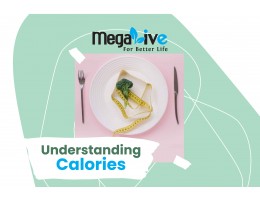
Calories are a unit of measurement for the amount of energy in food and beverages.
We put energy into our bodies when we eat and drink. This energy will then be used in our daily activities, such as breathing, sleeping, and running.
To maintain a stable weight, we must balance the energy we put into our bodies with the energy we use through normal body functions and daily activities. Simply put, the more calories you put into your body, the more activities you need to do to burn them off, and vice versa.
General calories intake
Men on average need about 2500 kcal per day, while women need about 2000 kcal per day. However, as mentioned above, the amount of recommended nutrient intake varies from person to person based on their daily activities, occupation, frequency of exercise, lifestyle habits, and also body metabolism.
The more vigorously you engage in an activity, the more calories you will expend. Fast walking, for example, burns more calories than moderate walking. If you're gaining weight, it could be because you've been eating and drinking more calories than you've been burning. To lose weight, you must expend more energy than you consume; this can be accomplished by eating less or exercising more vigorously. Doing this consistently over time will get you to your desired weight.
When people try to lose weight, they tend to restrict their food intake and often do not enjoy their diet changes. A healthy diet should also be a sustainable diet, which means gradually but consistently reducing unhealthy food consumption, consuming more healthier food options, and being mindful of the amount of food consumed.
Calorie counter
Nowadays, there are various apps that can be used on a mobile phone to track not only your calorie intake but also your steps, exercise, and the energy that you burn. Using all these apps and gadgets is helpful in making sure that you are on track with your diet and exercise.
One of the apps developed by the Ministry of Health Malaysia that is compatible with the Malaysian variety of foods is My Nutri Diary 2.0. The app is helpful in monitoring your calorie intake and your weight progress. Often, when we use calorie tracking apps, it frustrates users that the app does not know how many calories a nasi lemak has (or any local food), but with my nutri diary, it covers a variety of Malaysian food options, which can be helpful for our daily food consumption.
Gap between unhealthy diet and body needs
While trying to lose, put on, or maintain weight, imbalanced consumption of foods may lead to the loss of some essential nutrients. Hence, to bridge the gap between the lack of nutrients in food and what the body needs, consumption of multivitamins and multiminerals is helpful.
Other conditions include denture problems, loss of appetite, a hectic lifestyle, and many more.

Ginkgo or maidenhair is an ancient Chinese herb ingredient. It is collected from the dried green leaves of the plant and is available as liquid extracts, capsules, and tablets. It is used for various reasons as a traditional herb supplement. Currently, many studies are still exploring whether ginkgo can improve health condition as per belief.
Ginkgo and blood circulation.
Ginkgo contains high levels of flavonoids and terpenoids, these are antioxidants that provide protection against oxidative cell damage from harmful free radicals. These antioxidants also help to improve blood circulation by dilating blood vessels and reducing the ‘stickiness’ of platelets.
Ginkgo’s apparent ability to increase blood flow to various parts of the body may be the origin of its many supposed benefits.
Ginkgo and brain function.
Studies found conflicting findings on whether gingko can help with preventing and slows down Alzheimer and dementia, but studies also found out that it can help with improving cognition, memory, and attention.
Generally, ginkgo appears to be safe for consumption in moderate amount, research does not support the use of the supplement to prevent or slow dementia. Many more research is needed to find out what role gingko might play in supporting brain function and treating other conditions.

Iron is a mineral found in many proteins and enzymes that the body needs in order to stay healthy. Most of the iron in the body is found in haemoglobin, the pigment of red blood cells. Haemoglobin transports oxygen to all of the tissues and organs in the body. If there is an insufficient amount of iron in the blood, the amount of haemoglobin in the blood decreases too. This will reduce the oxygen supply to cells and organs.
During pregnancy, a haemoglobin level of 11 g/dl or above is considered normal. Between 3 to 6 months of pregnancy, a small drop of 10.5 g/dl is also considered normal. Lower levels of haemoglobin are usually due to a lack of iron (iron deficiency). Usually, the level of iron in the blood is measured in order to find out whether a low haemoglobin level is due to a lack of iron.
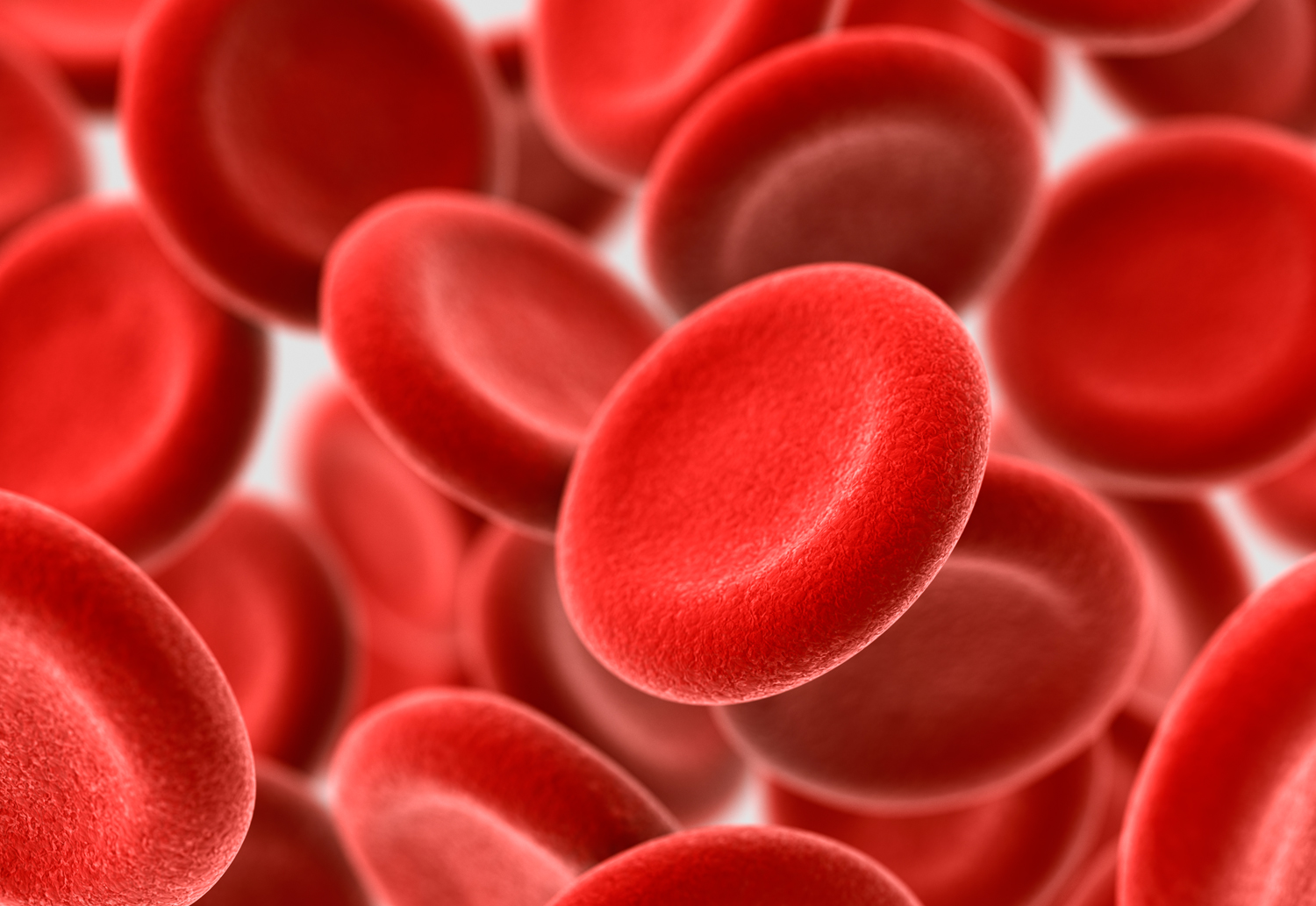
For a pregnant lady with a normal level of iron in her blood, it is not compulsory to consume an iron supplement; some people might consume it as a precautionary measure, but studies involving more than 40, 000 women show that there are no noticeable health benefits for the pregnancy or the baby. Although iron supplements were found to lower the risk of anaemia, they did not influence the number of preterm births, the number of babies with low birth weights, or infections in pregnant women.
However, it is important to know some of the examples of iron-rich foods that can be beneficial during pregnancy and for overall health, such as pistachios, sesame, rolled oats, whole grain rice and pasta, tofu, strawberries, tuna, shrimp, lettuce, chickpeas, peas, meat, and internal organs (liver).
In conclusion, we normally get iron from the food we eat. Meat has a lot of iron in it from haemoglobin in the animal’s body. The liver (internal organ) is particularly high in iron. Other than these foods, iron can be taken in the form of iron supplement too.
Reference:
1. Pregnancy and birth: Do all pregnant women need to take iron supplements? December 22, 2009. Last update March 22, 2018. National Library of Medicine. National Centre of Biotechnology Information. National Institute of Health (NIH).

Pertubuhan Kesihatan Dunia (WHO) telah mewartakan bahawa merokok merupakan risiko yang spesifik bagi komplikasi COVID-19 (1,2). Hal ini adalah kerana, jika virus korona menyerang tubuh badan individu yang merokok, peratus untuk individu tersebut pulih lebih rendah berbanding dengan individu yang tidak merokok manakala peratus untuk individu tersebut untuk mengalami kegagalan paru – paru yang serius pula adalah tinggi.
Umum mengetahui, COVID-19 adalah virus yang menyerang sistem pernafasan, jadi, individu yang merokok atau yang mempunyai masalah pernafasan dan/atau sakit – sakit kronik yang lain seperti masalah jantung, buah pinggang, kencing manis dan lain -lain jika terdedah kepada virus ini, mempunyai sebanyak 80.7% risiko kematian berbanding individu yang tidak menghidapi penyakit kronik (3).
Statistik juga menunjukkan bahawa, warga emas yang berusia 60 tahun ke atas mempunyai lebih 62.6% risiko kematian jika terdedah kepada virus ini berbanding individu berusia 60 tahun ke bawah (3). Lebih menakutkan lagi, jika individu yang berusia 60 tahun ke atas, dan mempunyai sejarah penyakit kronik terdedah kepada virus ini, risiko menghadapi kematian adalah sangat tinggi berbanding dengan individu yang yang berusia kurang dari 60 tahun dan tidak mempunyai sejarah penyakit kronik.
Tabiat merokok itu sendiri yang menyebabkan individu berisiko terdedah kepada pelbagai jenis komplikasi kesihatan, akan tetapi sebelum ini mungkin perokok menghadapi kesukaran untuk berhenti merokok disebabkan faktor rakan sekeliling, tekanan kerja dan sebagainya. Akan tetapi oleh kerana dunia diancam dengan wabak COVID-19, individu yang merokok mempunyai lebih sebab untuk berhenti merokok kerana anda mempunya risiko yang lebih tinggi terdedah kematian jika terdedah kepada virus ini.
Antara cara untuk berhenti merokok, yang telah dikumpulkan oleh Pengkalan Data Cochchrane Edisi Istimewa, mengenai cara – cara berhenti merokok adalah dengan menggunakan terapi kombinasi, iaitu penggunaan ubat dan juga sokongan moral (4).
Penggunaan Ubat – Ubatan seperti Nicotine Replacement Therapy (NRT) telah digunakan sebagai salah satu cara untuk berhenti merokok sekian lama. Terapi ini adalah bagi tujuan untuk menggantikan kebergantungan perokok kepada nikotin dan seterusnya menggurangkan motivasi perokok untuk terus merokok. Ia juga membantu mengawal kesan sampingan berhenti rokok/ kurang merokok (4).
Nicotine Replacement Therapy (NRT) ini memberikan nikotin dalam dos yang rendah kepada perokok tanpa apa apa bahan merbahaya yang lain seperti yang terdapat di dalam rokok. Terdapat pelbagai jenis Nicotine Replacement Therapy (NRT) dipasaran, iaitu sama ada dengan menggunakan gula getah nikotin (nicotine gum), ‘nicotine inhaler’, ‘nicotine lozenge’, ‘nicotine patch’ atau ‘nicotine nasal spray’. Kesemua jenis produk ini mempunyai dos, cara, dan kekuatan yang berbeza (5).
Produk bagi terapi nikotin telah direka dengan pelbagai jenis mekanisma untuk penyerapan dan perembesan nikotin di dalam badan. Sebagai contoh bagi gula getah nikotin, inhaler nikotin, lozenge nikotin dan nasal spray nikotin, ia memberi kesan kepada otak dengan lebih cepat berbanding nicotine patch akan tetapi mempunyai proses perembesan yang lebih lambat berbanding merokok (5). Nicotine patch pula merembeskan dos nikotin secara perlahan – lahan dan secara pasif, oleh kerana itu terapi nicotin patch biasanya digunakan bersama produk yang lain.
Kepelbagaian produk bagi membantu perokok berhenti merokok memberikan perokok beberapa pilihan untuk berhenti merokok dengan kaedah yang paling sesuai, berdasarkan kekerapan perokok merokok dan kebergantungan perokok kepada rokok tersebut (4,5). Kesemua produk ini berkesan jika digunakan mengikut kesesuaian terhadap tahap aktiviti merokok seseorang individu. (5).
Selain daripada penggunaan ubat – ubatan, terdapat beberapa langkah yang biasanya disyorkan oleh Kementerian Kesihatan Malaysia (KKM), iaitu yang pertama ialah dengan membaca atau mendapatkan informasi mengenai bahaya rokok dari sumber yang sahih, berkenaan bahaya merokok dan kelebihan berhenti merokok.
Terdapat banyak kelebihan berhenti merokok kerana merokok memberi banyak keburukan kepada diri sendiri dan orang sekeliling terutama ahli keluarga, sebagai contoh kanak – kanak yang selalu terdedah kepada asap rokok atau asap rokok basi akan lebih sering sakit seperti batuk – batuk, selsema serta jangkitan telinga, hidung dan tekak. Merokok juga boleh membuatkan paru – paru lemah dan penyakit seperti asma (6).
Selain daripada aspek kesihatan bagi orang yang tersayang, merokok juga boleh menyebabkan anda mendapat pelbagai jenis penyakit seperti, kanser paru – paru, penyakit paru – paru yang kronik, strok dan ulser di bahagian bawah lapisan kulit perut. Individu yang merokok juga mengikut statistik mati lebih awal, kerana statistik menunjukan satu dari dua orang perokok mati disebabkan penyakit berkaitan merokok (6).
Tabiat berhenti merokok juga dapat menjimatkan wang, labur wang anda berbanding membeli rokok sebagai contoh
Wang untuk membeli rokok = RM5.00/sehari
Sebulan = RM 150.00
Setahun = RM 1800.00
Jika anda melabur untuk 10 tahun, anda sudah mempunyai RM18,000.00 dalam akaun simpanan anda) (6).
Selain, Ia juga dapat melindungi alam sekitar – Puntung rokok dibuang oleh perokok boleh menyebabkan kebakaran (6).
Terdapat pelbagai kaedah untuk berhenti merokok. Faktor yang paling penting adalah keinginan anda untuk menjadikannya satu kenyataan. Mula dengan menetapkan tarikh untuk berhenti merokok dan pastikan tarikh tersebut boleh dicapai. Dalam pada masa yang sama, anda mesti yakin dengan keupayaan diri untuk berhenti merokok. Katakan pada diri anda “saya bukan perokok” Ulang beberapa kali sehingga menjadi semangat untuk berhenti merokok. Sentiasa berfikiran positif dan dapatkan sokongan daripada orang sekeliling.
Teknik berhenti merokok yang paling selalu digunakan dan disyorkan oleh Kementerian Kesihatan Malaysia (KKM) ialah dengan mengamalkan Teknik 12M (6).
1. Melengah – lengahkan
Sebagai contoh jika anda terasa seperti mahu merokok, lengah – lengahkan tabiat tersebut seperti tunggu 5 minit atau katakan kepada diri sendiri sebentar lagi “saya akan merokok”.
2. Menarik Nafas Panjang
Tarik nafas 3 kali secara perlahan-lahan. Ulangi perkara yang sama sehingga hilang rasa untuk merokok.
3. Minum air
Anda juga boleh mencuba untuk minum air masak bagi mengalihkan perhatian anda dari tertumpu kepada ketagihan rokok.
4. Menyibukan diri
Buat sesuatu bagi mengalih fikiran untuk melupakan rokok. Buat perkara yang dapat mengalihkan tumpuan anda seperti bersenam atau bermain permainan video.
5. Menjauhkan diri daripada perokok
Oleh kerana musim PKP ini adalah masa yang terbaik untuk berhenti merokok. Anda boleh menjauhkan diri anda dari rakan – rakan dan ahli keluarga yang merokok, gunakan masa yang ada untuk bersama keluarga tersayang.
6. Mengelakkan diri daripada suasana atau situasi yang mendorong kepada merokok
Seperti keadaan berseorangan tanpa berbuat apa – apa (keadaan bosan) atau keadaan tertekan.
7. Mengunyah sesuatu seperti gula getah atau buah-buahan.
Mengunyah dapat membuatkan rongga mulut sibuk dan mengalihkan perhatian dari ketagihan rokok. Elakkan makanan yang manis kerana ia memberi risiko kepada penyakit – penyakit kronik yang lain pula.
8. Membasuh tangan selalu
Membasuh tangan dengan kerap juga dapat menghilangkan ketagihan kerana kita telah mengalihkan perhatian kita daripada keinginan untuk merokok.
9. Mandi dengan kerap
Mandi dengan kerap menyebabkan badan menjadi segar dan dapat melupakan ketagihan yang di alami, seketika.
10. Meregangkan otot
Senaman yang atau regangan otot apabila ketagihan untuk merokok datang dapat menghindarkan diri dari merokok.
11. Meditasi
Meditasi menyebabkan kita ingat kembali sebab – sebab untuk kita berhenti merokok dan boleh membangkitkan kembali semangat kita untuk berhenti merokok.
12. Memohon doa
Memohon doa agar rasa ketagihan dihilangkan dan dipermudahkan urusan untuk berhenti merokok seperti dihindarkan dari perkara – perkara yang boleh menyebabkan keinginan untuk merokok untuk kembali.
Selain daripada langkah - langkah yang telah disyorkan anda juga boleh mendapatkan maklumat yang lebih lanjut di laman sesawang KKM. Terdapat banyak bahan – bahan rujukan cara untuk berhenti merokok yang boleh di muat turun di laman sesawang yang sahih seperti di Portal MyHealth Kementerian Kesihatan Malaysia (KKM)(5). Selain dari bahan – bahan sokongan yang boleh di muat turun, terdapat juga nombor QuitLine yang boleh dihubungi di nombor 03-88834400 bagi keterangan lanjut mengenai cara berhenti merokok dari kaunselor berhenti merokok atau layari laman web jomquit.moh.gov.my (4,5).
Rujukan
The Star. Stub It Out Now, Smoking and Added Health Risk for COVID19. https://www.thestar.com.my/news/nation/2020/04/13/effective-ways-exist-to-quit-smoking-while-under-mco (Diakses 17 April 2020).
The Star. Smokers face high infection rate. https://www.thestar.com.my/news/nation/2020/04/13/smokers-face-higher-infection-risk (Diakses 17 April 2020).
Ketua Pengarah Kementerian Kesihatan Malaysia (KKM). From the desk of the Director General of Health Malaysia. https://kpkesihatan.com/2020/04/16/kenyataan-akhbar-16-april-2020-situasi-semasa-jangkitan-penyakit-coronavirus-2019-covid-19-di-malaysia/ (Diakses 17 April 2020)
Cochrane. COVID-19 Resources. https://www.cochrane.org/news/special-collection-effective-options-quitting-smoking-during-covid-19 (Diakses 17 April 2020)
Portal Rasmi My Health Kementerian Kesihatan Malaysia. http://www.myhealth.gov.my/en/nicotine-replacement-therapy-nrt/ (Diakses 17 April 2020)
Info Sihat. Bahagian Pendidikan Kesihatan. Kementerian Kesihatan Malaysia (KKM). https://www.infosihat.gov.my/index.php/isu-semasa/42-tips-berhenti-merokok (Diakses 17 April 2020)
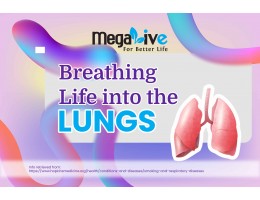
We breathe in and out about 22,000 times a day. When resting, an average adult breathes about 12–20 times per minute. Though it looks small inside our body, when the lung is spread out, its size is actually about half the size of a tennis court. It has 2400 km of airways and up to 500 million alveoli (places where oxygen exchange occurs in the lung). Our lung is very unique in such a way that, though it has left and right sides, both of these are not entirely identical; the left lung is smaller than the right lung, and the left lung has only two lobes while the right lung has three (1).
Amazing, isn’t it? Starting today, let's not take the lung for granted. Now, it is time to find out how to breathe life into the lung.
Smoking and your lung health (2,3)
Among the things that you can start to cultivate in order to take care of your lungs is to stop smoking if you are a smoker. Though it is easier said than done, there are thousands of people who have successfully quit smoking with the correct guidance, motivation, and support. Above all, you must first recognise the factors that influence you to smoke and start to tackle them. As for addiction, it is something that can be worked out with patches, medication, support from your loved ones, and a conducive environment. If you are a passive smoker, it is time for you to take charge of your life. It is time to be stern if the smoker is one of your loved ones; provide them with some rules and regulations for smoking; and if it is in public, avoid places where you know smokers will be there. Remember, you’re saving your lung while doing so!
If you are a passive smoker or you are currently smoking and have yet to quit, you may consider supplements to take care of your lung health while trying to quit smoking. A herbal supplement such as tiger milk mushroom is suitable for smokers, people with breathing problems like cough and cold, senior citizens with weak hearts, and those who are always exposed to harmful smoke, like passive smokers.

Exercise or simply move (4)
Exercise can also help make sure your lung health is tip top! Exercise can be considered any kind of physical activity. It can be structured or planned exercise or simply your daily chores, which require you to move your body and sweat out. With the correct exercise that requires your cardiovascular conditioning, or simply put, exercise that involves your heart and lungs to pump the blood even quicker and to breathe in and out at a much quicker pace, it is considered aerobic exercise or moderate exercise. This includes activities like brisk walking, swimming, running, and cycling. All these activities, if done correctly, will improve your lung capacity, which is good for your lung health as well.

Stay indoors and avoid harmful pollution (3)
Nowadays, with our current transportation system in Malaysia, it is very likely for us to inhale bad air into our lungs. What you can do with regards to this is avoid heavy traffic and clean your house regularly to avoid the buildup of mold, dust, and allergens. You may ventilate your house and workplace frequently as well, so they have a good air circulation system inside. One of the smart ways that you can do before you plan your journey is to check the air quality of the place that you plan to go.
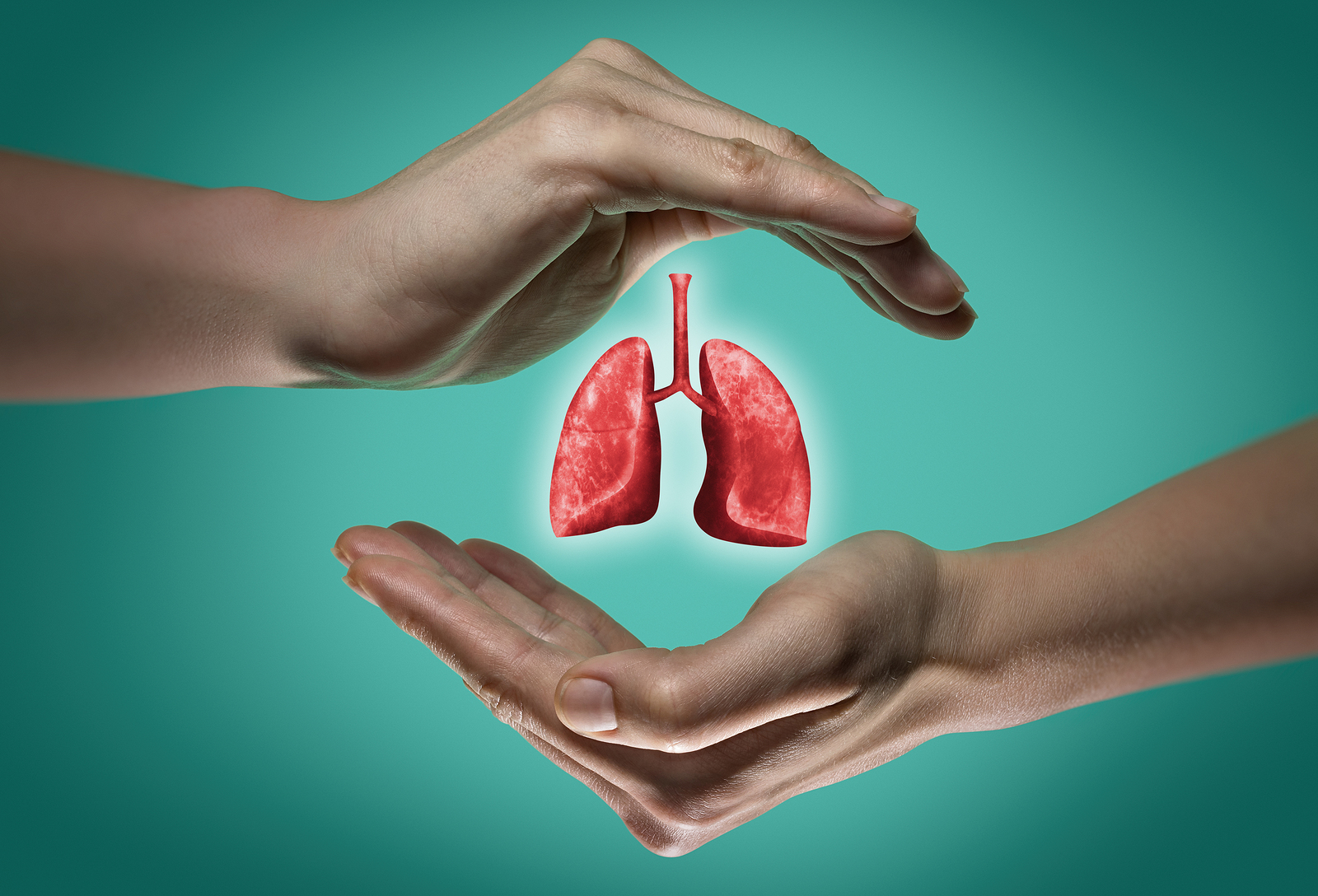
Prevent infection (3,5)
As for infection related to the lung, it can be due to various reasons, but one thing you can do to decrease your risk of getting infected is by frequently washing your hands. Do not touch your face with unwashed hands. Some people even consider getting the flu vaccine. Talk to your doctor to find out whether you should get a flu vaccination.
In conclusion,
It is easy to actually value your lung's worth and take care of it if you are living a mindful life. A simple activity like opting to use stairs instead of an elevator or lift can also benefit your lung. Avoid places with heavy traffic and wear proper personal protective equipment when handling hazardous or harmful chemicals. Making sure your house is properly ventilated can improve indoor air quality. Start now to take care of your lung, or you will regret it!
References
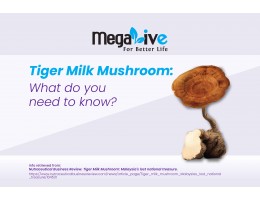
Lignosus rhinoceros, or its common name, Tiger Milk Mushroom, has been used since ancient times. It is very precious due to its rarity, since it grows in isolation. Within the same 5km radius, you will not find another stalk of Tiger Milk Mushroom. Another reason is that the medicinal properties of Tiger Milk Mushroom are only found in the underground tuber; if you find it at the stage where it has already sprouted out from the ground with a stem and cap, the active compound inside it may have already diminished. Tiger Milk Mushroom, also known as ‘Cendawan Susu Harimau, got famous after the former Prime Minister, Tun Dr. Mahathir Mohamad, said his chronic cough stopped after he consumed Chinese medicine derived from Tiger’s Milk Mushroom at the opening of the International Convention on Biotechnology in 2002 in Kuala Lumpur (1, 2).
Just as its name implies, folklore tales and Indigenous people believe that the mushroom grows whenever drops of tiger’s milk fall to the ground. The mushroom grows on soil deep in the tropical jungles; they thrive in areas with humidity levels over 80% and grow mainly in Genting Highland and Kuala Lipis in Pahang and in Perak (3).
Tiger Milk Mushroom and its Benefits
The tiger milk mushroom consists of three parts: its cap (pileus), stem (stipe), and tuber (sclerotium). The sclerotium is a compacted mass of fungal mycelium containing food reserves, while the cap and stem are woody. The sclerotium, or tuber, is the part where most of its medicinal properties are stored. The sclerotium is white and yields a milk-like solution that tastes like milk (3).

Since ancient times, tiger milk mushrooms have been used by the indigenous community in Malaysia to treat common colds, coughs, flu, and asthma. A study on rats with asthmatic symptoms found that the usage of tiger milk mushroom extract can improve asthmatic rats TH2 cells, which are important in producing Immunoglobulin E (Ig E). IgE is the antibody that will help to recognise a foreign body or allergen that will cause a reaction in the body and chase it away (3).
Tiger milk mushroom is also found to have some natural anti-coagulant properties. Anticoagulant properties are important during thrombolysis treatment. Thrombolysis is the treatment that is used to dissolve blood clots, either in the brain or an artery. Some of the natural anticoagulant and fibrinolytic agents are also used to treat thrombolytic conditions. Certain studies also found out that ‘wood ear fungus’ (a type of mushroom) is able to produce protease-like fibrinolytic enzymes, which could serve as thrombolytic agents to dissolve blood clots. Since the study found out that tiger milk mushroom also has the same protease enzyme, with this property demonstrated by tiger milk mushroom, it is presumed that it is able to be used for cardiovascular diseases (3).
There are also studies showing the comparison between wild tiger milk mushrooms and cultivated tiger milk mushrooms for their antioxidant properties. The study found that both wild and cultivated tiger milk mushroom extracts are able to scavenge free radicals; hence, it was concluded that they have anti-cancer properties, though the nutritional content of wild and cultivated tiger milk mushrooms differs (4). Wild tiger milk mushrooms contain more insoluble fibre and soluble fibre as compared to cultivated tiger milk mushrooms; cultivated tiger milk mushrooms also have more carbohydrate as compared to wild tiger milk mushrooms (4).
In conclusion…
There are many other studies on tiger milk mushroom, and it is found that it can give various health benefits to the human body; however, as tiger milk mushroom is a herb-based ingredient, its effects may differ from individual to individual, and some individuals may have different experiences with it. The takeaway message with regards to taking tiger milk mushroom supplements is that they have to go hand in hand with healthy lifestyles, such as exercise, since the symptoms you are experiencing need to be alleviated with lifestyle modifications such as exercise and stop smoking as well.
References
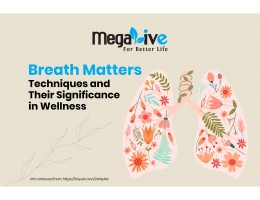
Frequently, we perform thousands of breaths each day, often without contemplating the significance and benefits this fundamental bodily function affords us. In contrast to the indispensability of breathing, research regarding breathing techniques remains relatively limited. Nevertheless, there are specific breathing techniques recommended for enhancing various aspects of our health.
Stress and Belly Breathing
One of the most common techniques is breathing exercises aimed at managing stress. Numerous studies have conclusively demonstrated the efficacy of breathing exercises in alleviating anxiety disorders, panic attacks, and general stress. The United Kingdom's National Health Service (NHS) recommends the use of belly breathing for individuals grappling with stress, anxiety, and panic (1). In today's context, where mental health issues have become increasingly prevalent due to the ongoing COVID-19 pandemic and other stressors, it's crucial to educate ourselves and our loved ones on how to respond when confronted with situations that trigger panic, anxiety, or stress (2).

Consistency is key when it comes to reaping the benefits of most breathing exercises. These exercises can be performed while standing, sitting in a chair with proper lumbar support, or lying down on a bed, yoga mat, or the floor. Ensuring your comfort is paramount; if anything restricts your breathing, adjust it as necessary. When lying down, extend your arms slightly away from your sides, with your palms facing upward, and maintain your legs straight or bend your knees so your feet lie flat on the floor. If you're sitting, rest your arms on the chair's armrests. In both sitting and standing positions, ensure both feet remain flat on the ground, spaced approximately hip-width apart. Inhale gently and steadily, some may find it helpful to count slowly from 1 to 5. Initially, reaching 5 may be challenging, but that's perfectly fine. Inhale through your nose and exhale through your mouth. Allow your breath to penetrate deep into your abdomen, never force it. As you inhale, you'll feel your chest expand, and as you exhale, your abdomen will rise. Practice this for 3 to 5 minutes (1,3).
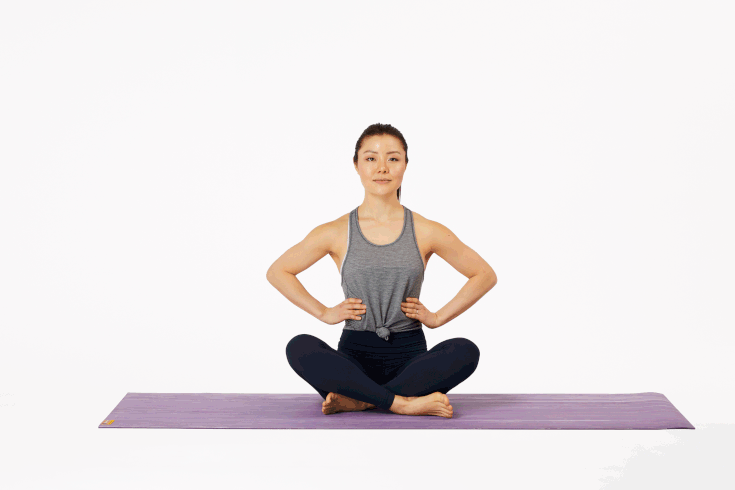
Asthma and Buteyko Breathing
Asthma, a debilitating chronic condition characterized by airway hyper-responsiveness and associated respiratory symptoms, is exceedingly common and often presents as a primary complaint in healthcare clinics, even in Malaysia (3,4).
While there aren't many studies exploring the efficacy of Buteyko breathing exercises in treating asthma, a recent review study from 2018 opted to withdraw due to insufficient studies meeting contemporary scientific standards (3,4). Nevertheless, it's worth noting that researchers did conclude that, although they couldn't draw definitive conclusions regarding the use of breathing exercises in clinical asthma management, there was a promising trend in improved quality of life measures. This implies that individuals with asthma who incorporate Buteyko breathing into their daily routines report a potential enhancement in their quality of life, potentially experiencing fewer or less severe asthma attacks (3,4).
Therefore, individuals with asthma might consider integrating the Buteyko breathing technique into their daily regimen to enhance their overall quality of life. The Buteyko breathing exercise entails the following steps:
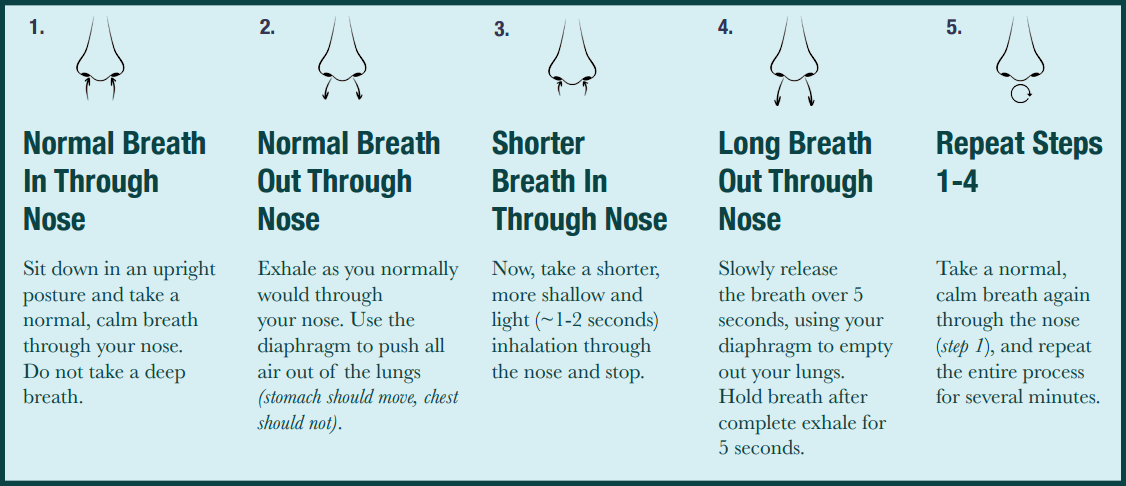
Lung Health and Diaphragmatic Breathing
Many people inadvertently develop a habit of utilizing neck, shoulder, and back muscles, which significantly impedes the airflow in and out of the lungs. A 2016 research study published in the Journal of Physical Therapy Science investigated the effects of diaphragmatic breathing on respiratory function. It utilized two groups, with one practicing feedback breathing exercises and the other engaging in diaphragmatic breathing. The results indicated an increase in lung capacity among the diaphragmatic breathing group (6).
Diaphragmatic breathing effectively strengthens the diaphragm muscle, thereby enhancing the efficiency of lung function. To perform this exercise, focus on breathing from your abdomen, placing one hand on your belly and the other on your chest while inhaling and exhaling. Inhale through the nose for two seconds, and exhale through pursed lips for two seconds. During exhalation, gently press down on your abdomen to ensure proper engagement of your diaphragm muscle (6).
In Conclusion
Numerous breathing exercises can be found on the internet, but the task at hand is to identify the one suitable for your specific condition and overall well-being. Once you've identified your ideal technique, consistent practice can yield long-term benefits for your overall health. Just as physical activities contribute to better lung health, so do breathing exercises.
It's intriguing to note that laughter and singing can also enhance lung health. The movements involved in these activities, particularly those of the lips, facilitate the expulsion of stale air from your lungs, replacing it with a fresh breeze, ultimately increasing lung capacity and benefiting your overall lung health (6).
So, the next time you hear someone singing, even if their voice isn't the most melodious, consider supporting them or applauding their contribution to better lung health!
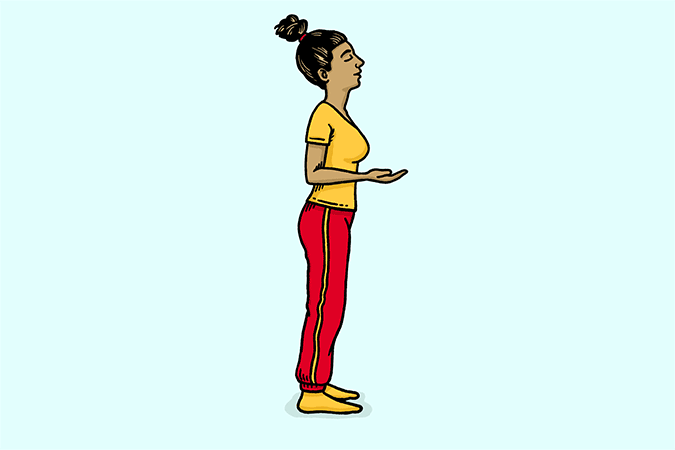
References